BRAND

Project
Summary
Made With
GAMIFYING ARMY BASE MANAGEMENT
I led the creative team at IDSI to develop and launch a management game for U.S. Army Base Commanders
Eric Monachello
Emerson Smith
Henry Meredith
Kayson Bell
Cassandra Trissler
Zach Helm
Background
presented with a unique opportunity
In 2017, the Office of the Assistant Secretary of the Army (Installations, Environment & Energy) proposed an idea for a management game to help with the gap of training for incoming garrison commanders. IDSI was brought in to help define, develop and release the game. As creative director, I scoped the project, pitched design ideas, blended the educational elements into the game, and worked with the team to design and develop the final product. The project was broken down into three phases, with Phase 1 being a gameplay tutorial and "First Week on the Job" level.
UX Research
FINDING OUR AUDIENCE
Starting with user workshops, we collected information on what being a garrison commander (GC) meant and worked to identify our target demographic for training. Research identified the GC's as high-ranking military officers aged between 40 to early 50's, responsible for the day-to-day operations of staff on an Army installation (base), up to 5 million people. This demographic put us in a unique challenge of creating a complex management game for 40-50 year olds. Given this audience demographic, we focused on making Garrison Fox a time-management and decision-making game to support engagement and promote "on-the-job" learning.
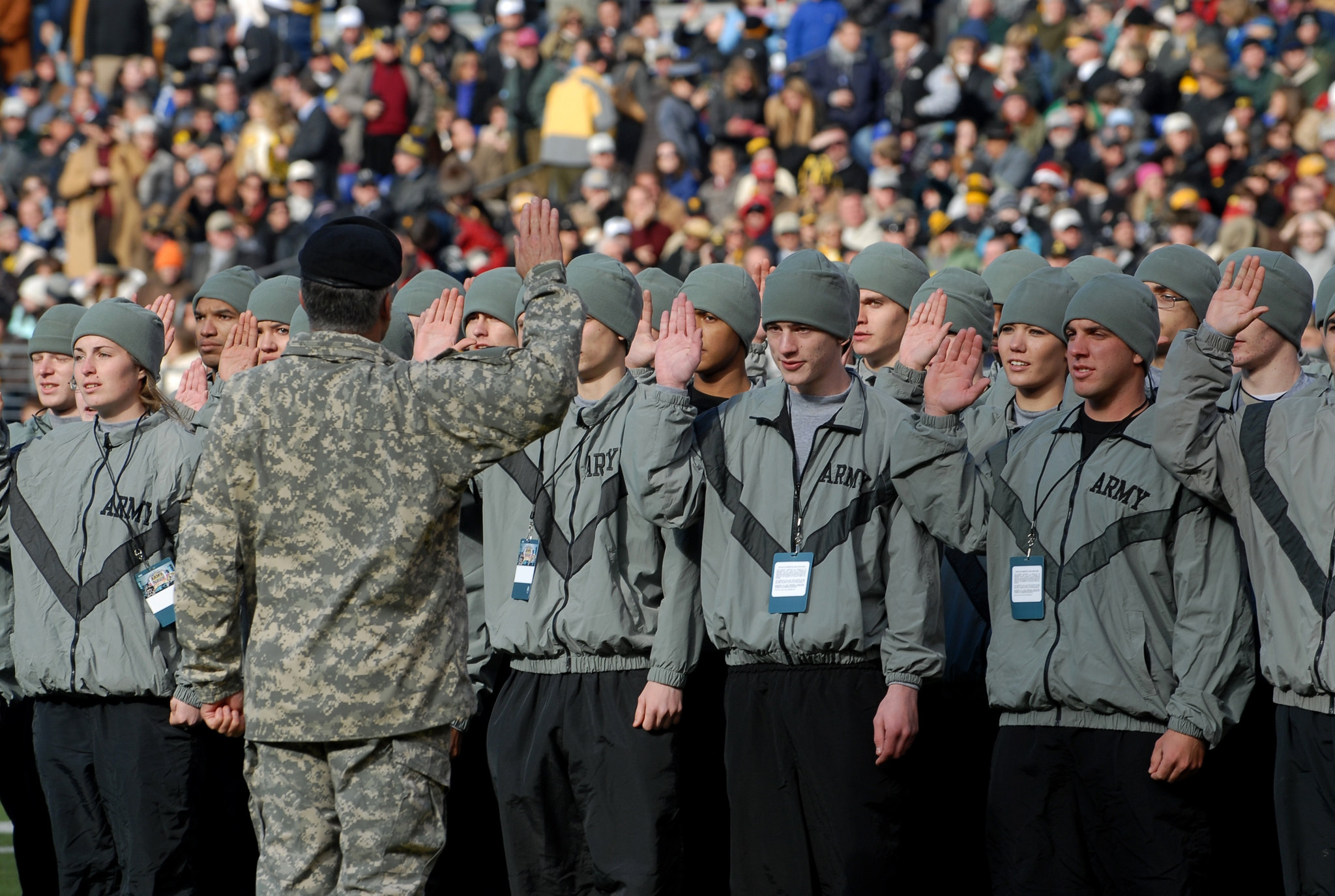
SCOPING THE BIG IDEAS
Once our audience was defined, we started to brainstorm how to achieve the customers' vision for the product. The customer identified over 88 real world events for us to incorporate. I worked with the game design team to build upon the decision system we implemented for 'Reserve Life,' a different game we created.
Working from lessons learned, I worked with the development team to identify how we could write dialogue outside the game engine in a separate program called "Yarn." This enabled us to write branching decision-based events quickly, exporting as a JSON file and load it directly into the game level. This separation from the game engine kept writers out of code and developers out of the dialog.
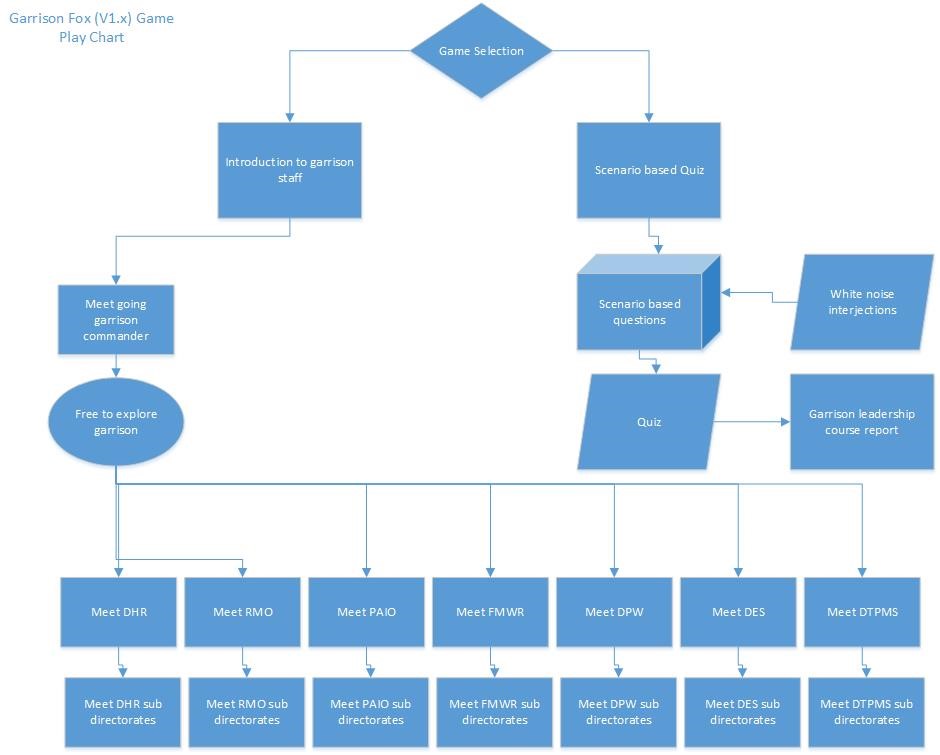
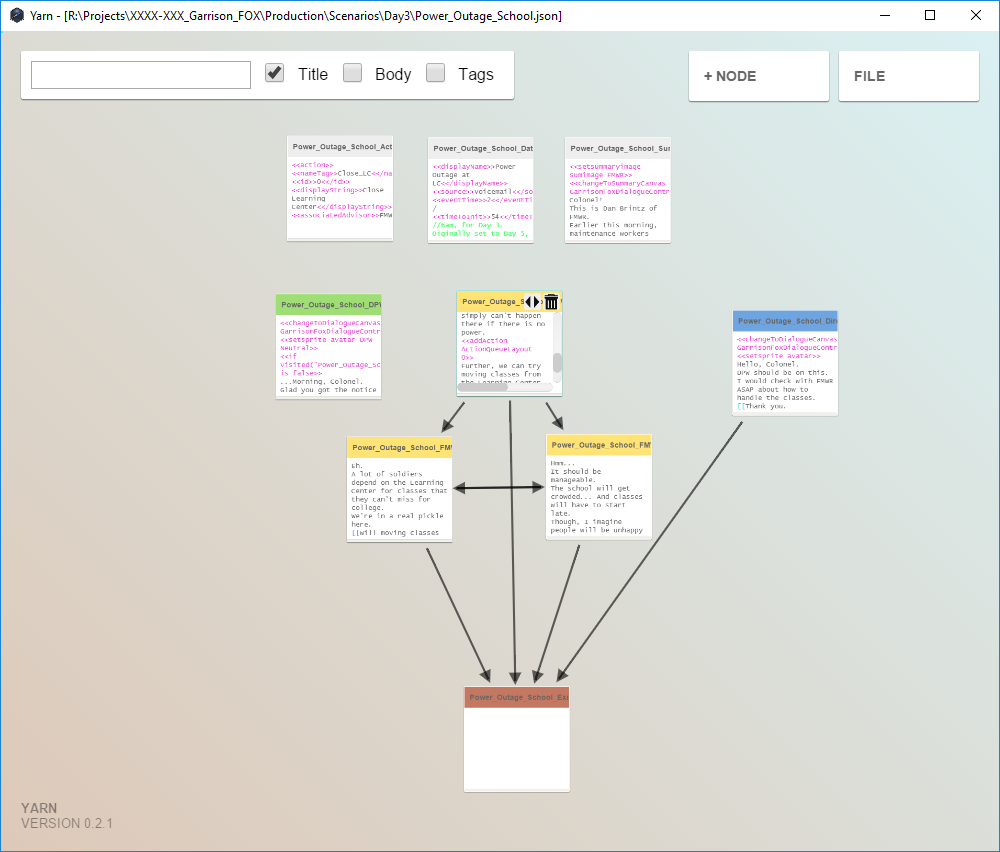
GAME DESIGN
COMBINING the learning SCIENCE
As the game skeleton refined, I collaborated with instructional designers to brainstorm how we could layer in learning elements into the scenarios. We expanded the "choose your own adventure" game into a much broader concept, where users had to build upon choices and execution took time, just like in the real world. We even introduced the concept of working with different characters, which would be done through dialogue, which we used to scaffold the difficulty of the game.
I worked with instructional designers to create the Terminal Learning Objective (TLO) and Enabling Learning Objectives (ELOs) to outline the goals and expectations of users. I took these learning objectives and worked with the team as a whole to build the flow of the game. After several design sessions, we created a linear game experience, with procedural events and dialog.
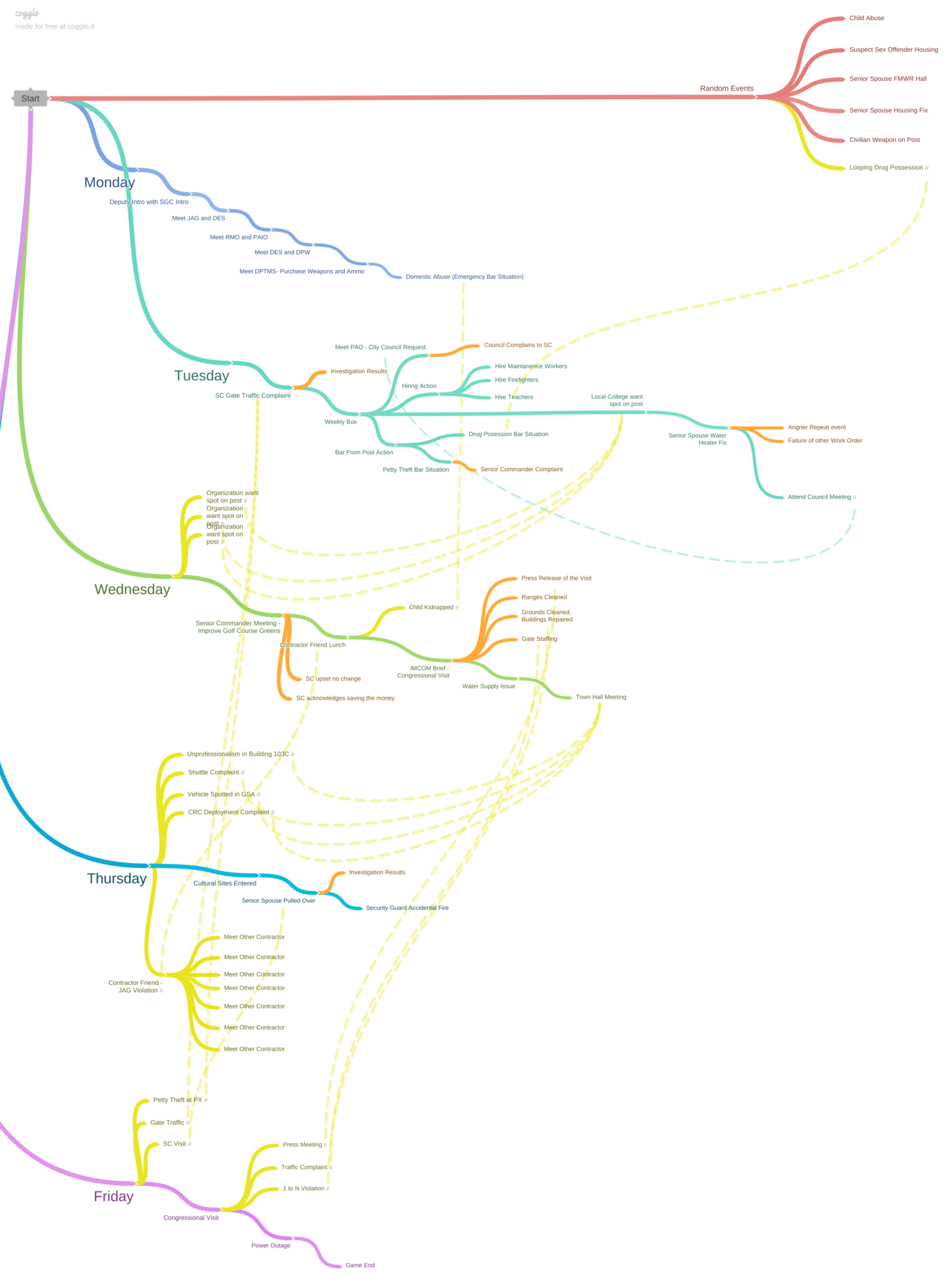
Design Explorations
As we started to develop components, I worked with the design team to create an art style that resonated with our demographic but wasn't overly militaristic. After collecting reference and creating moodboards we worked off four design ideas and iterated on them continuously.
We presented each design to users and showed how we would incorporate motion. As the overall design became more defined we started to create nuances in designs and color schemes, stepping away from what would be thought of as a "militaristic game."
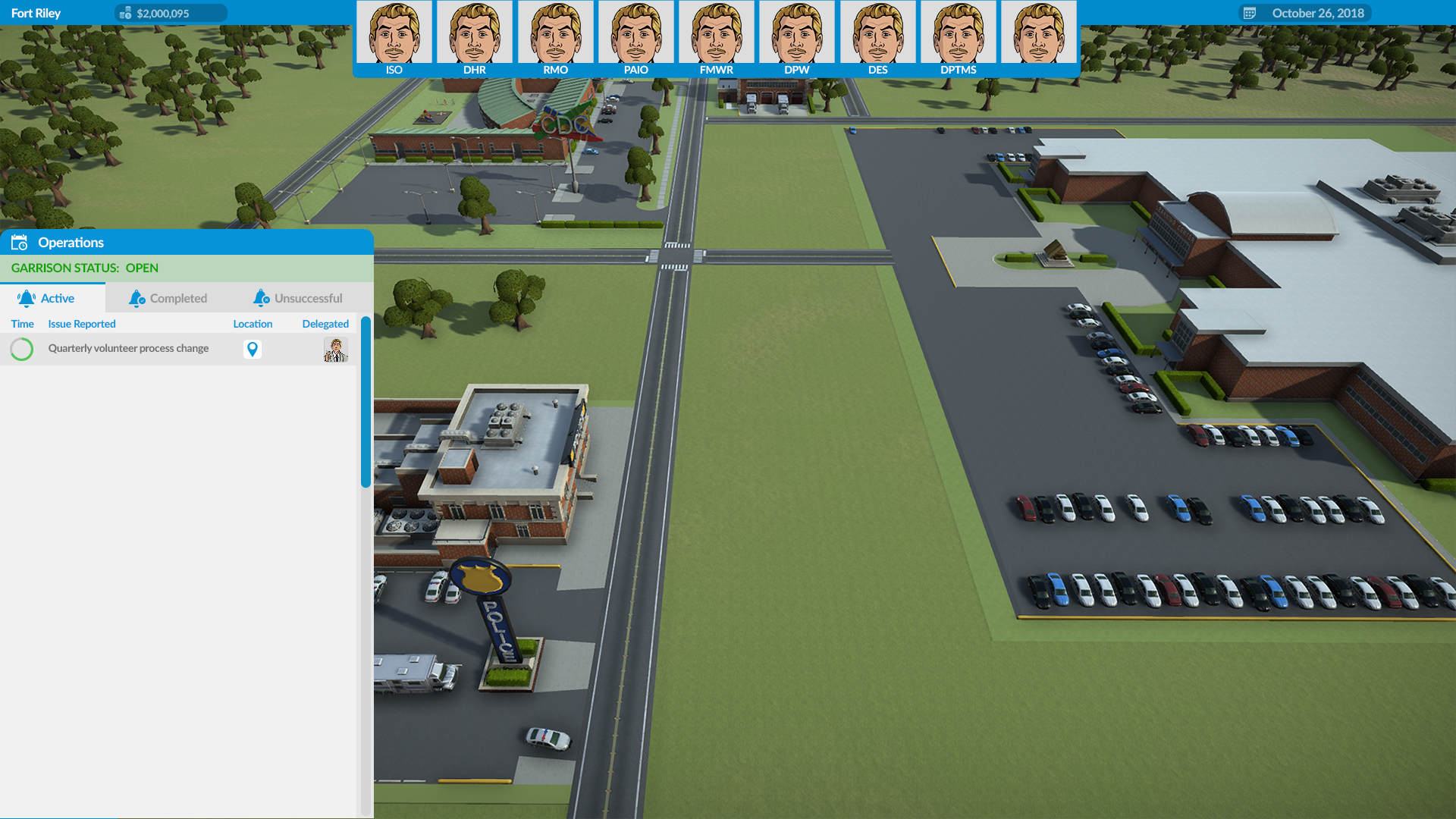
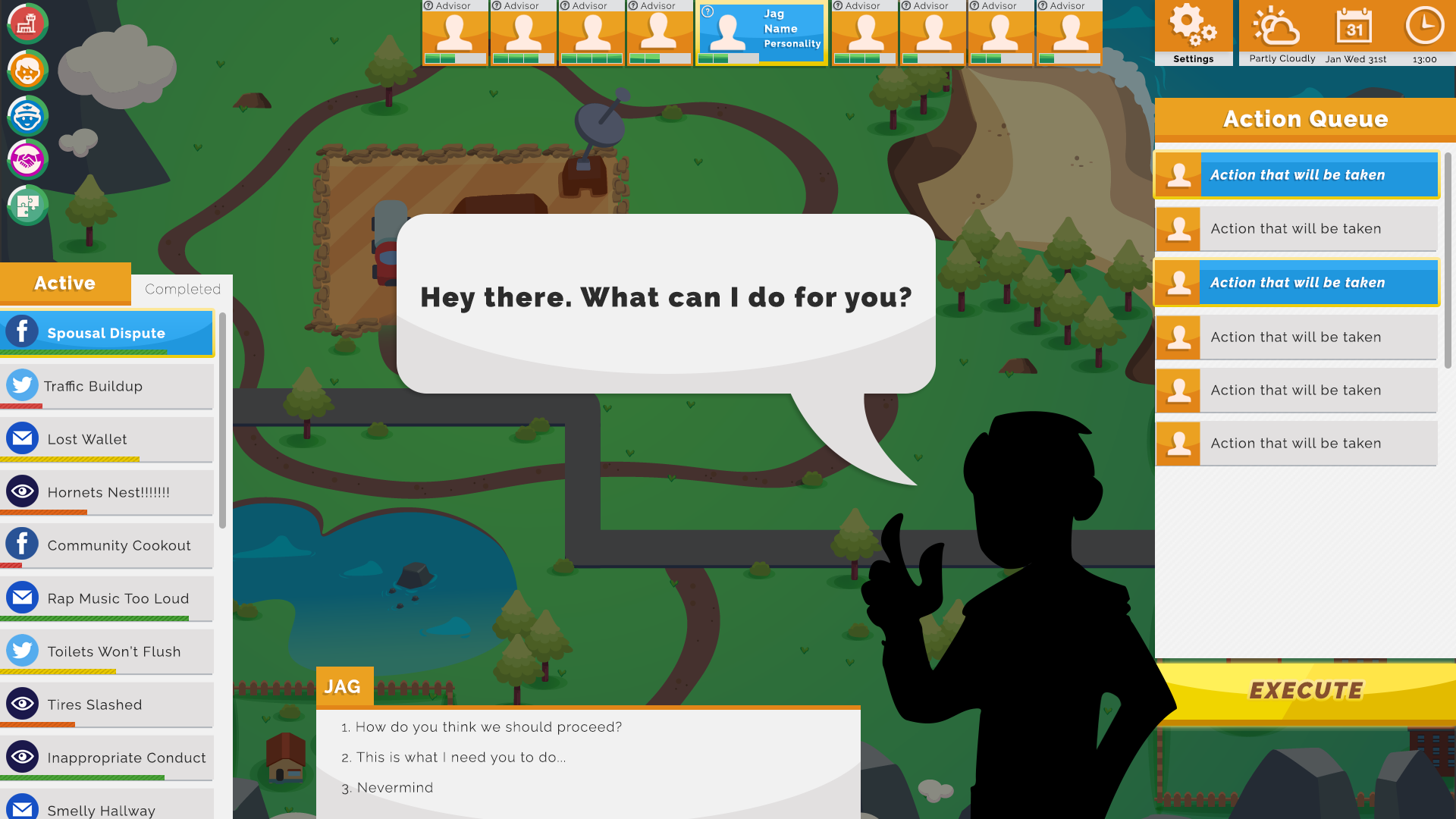
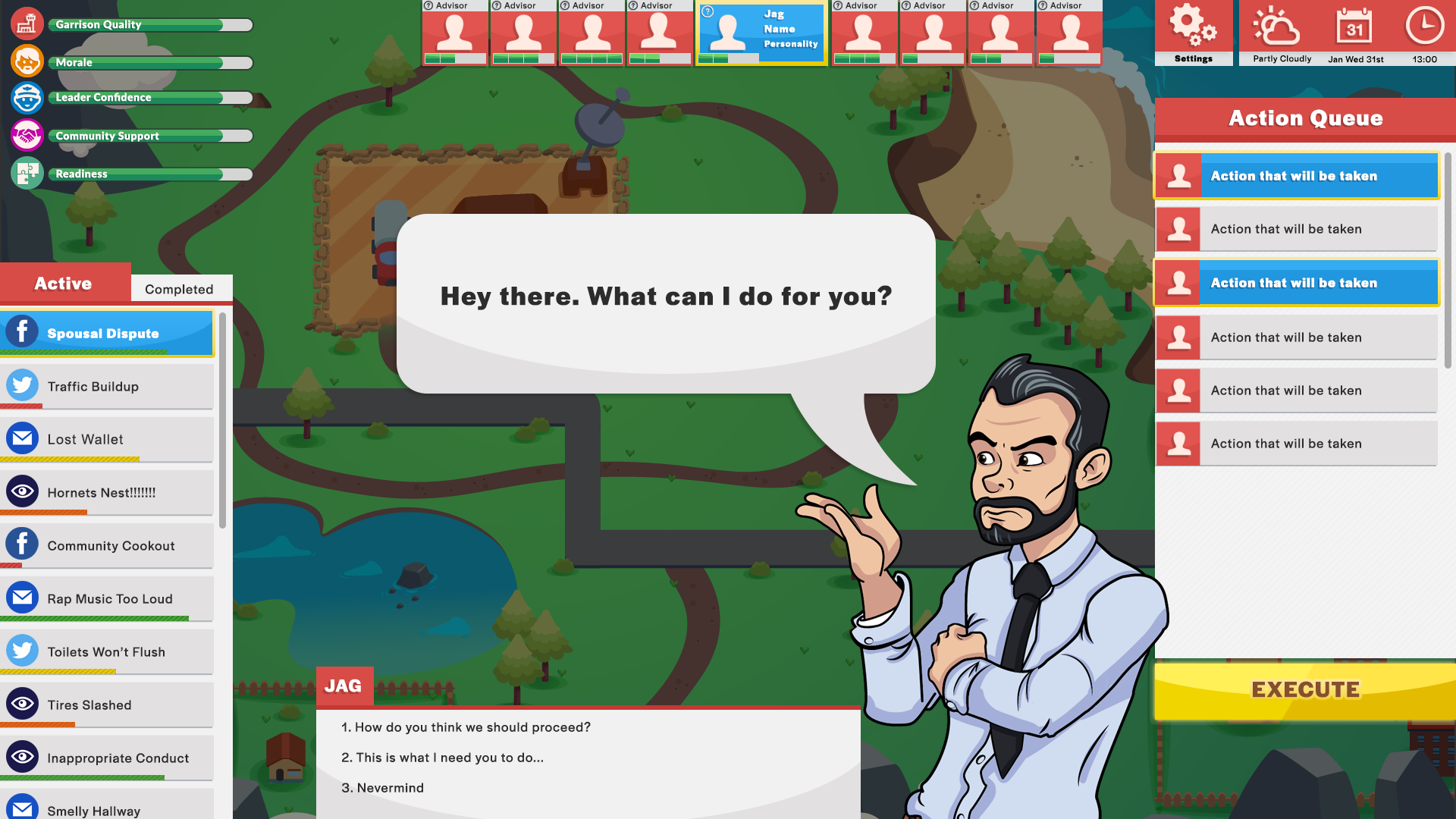
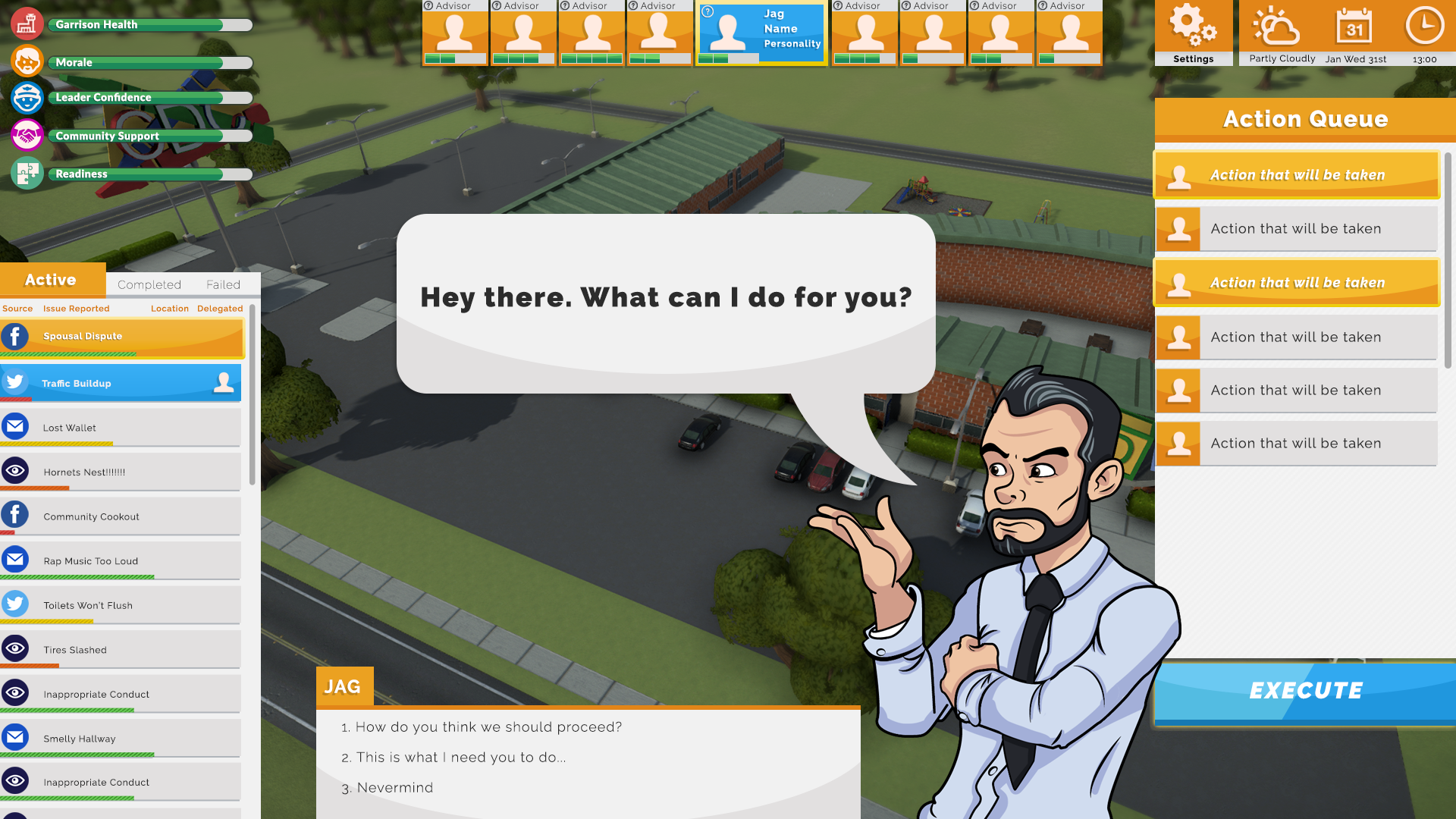
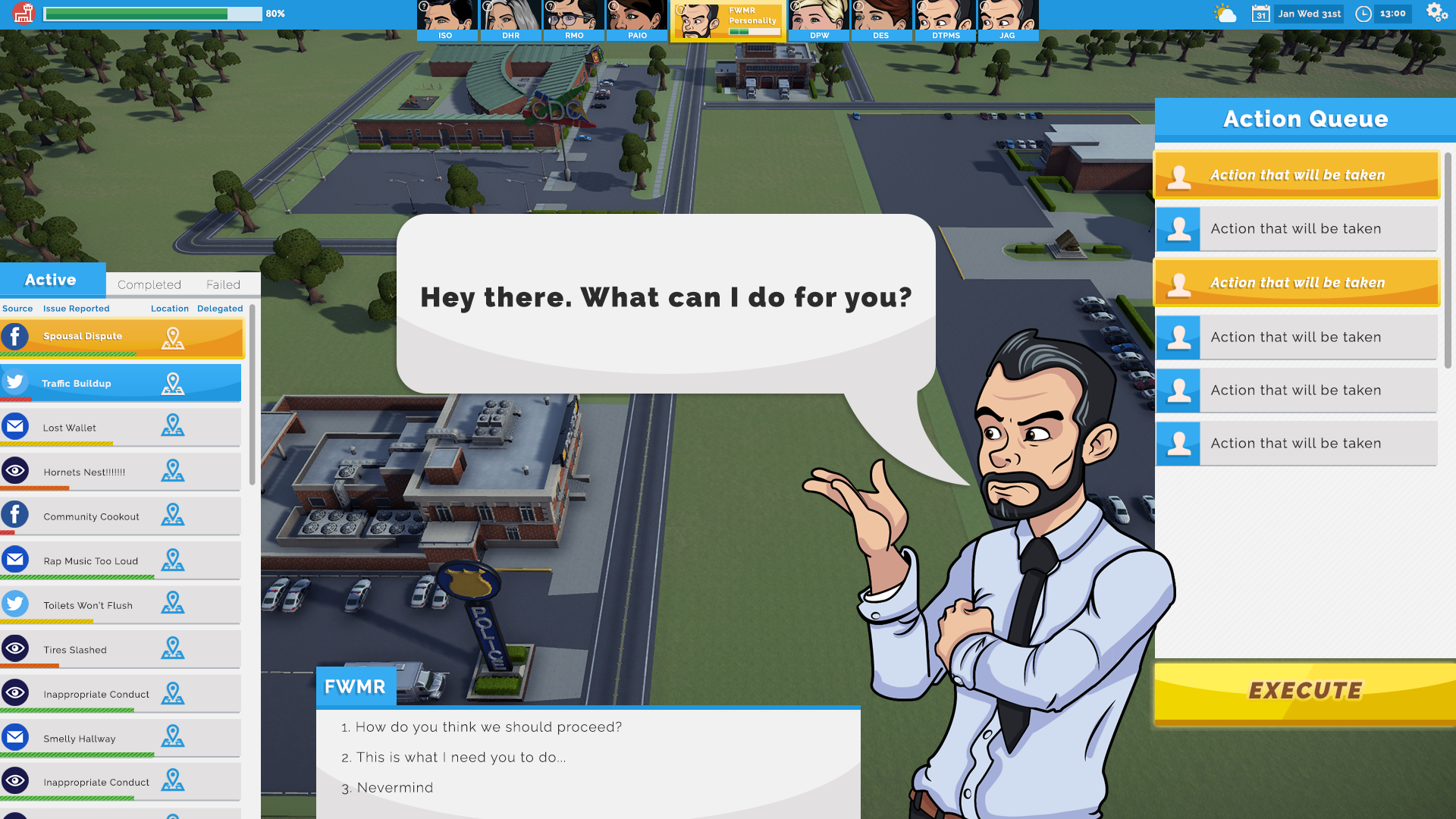
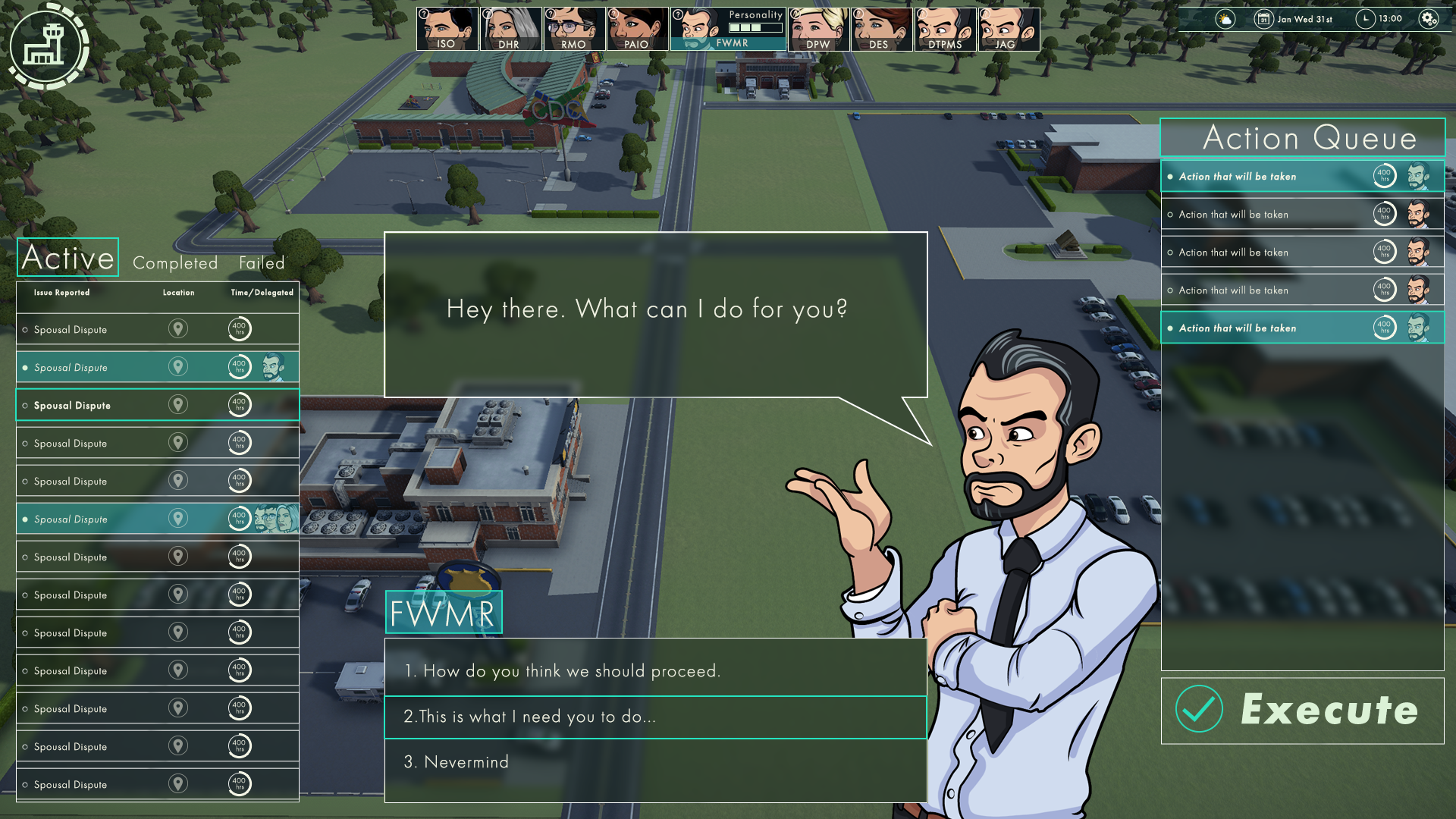
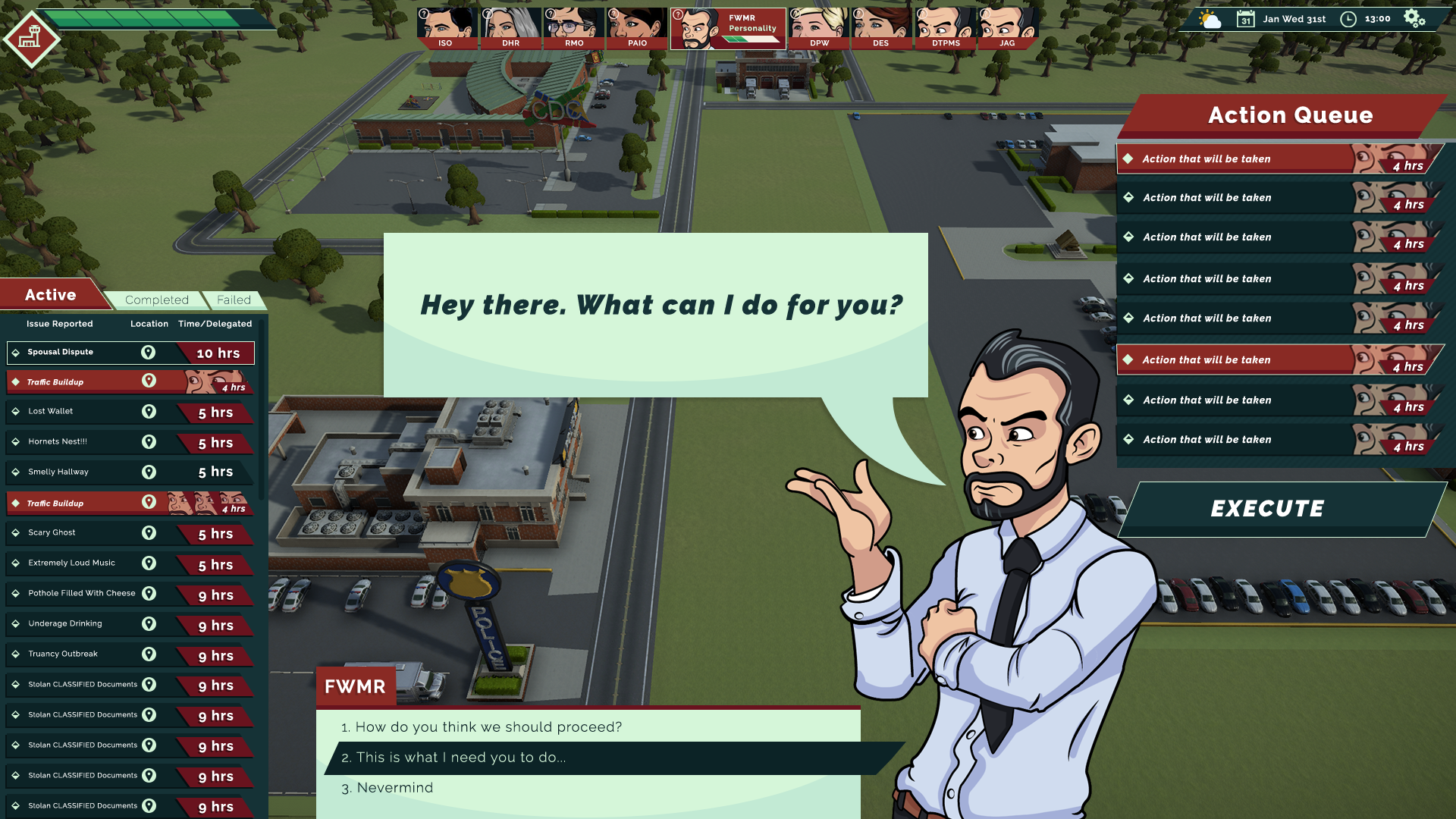
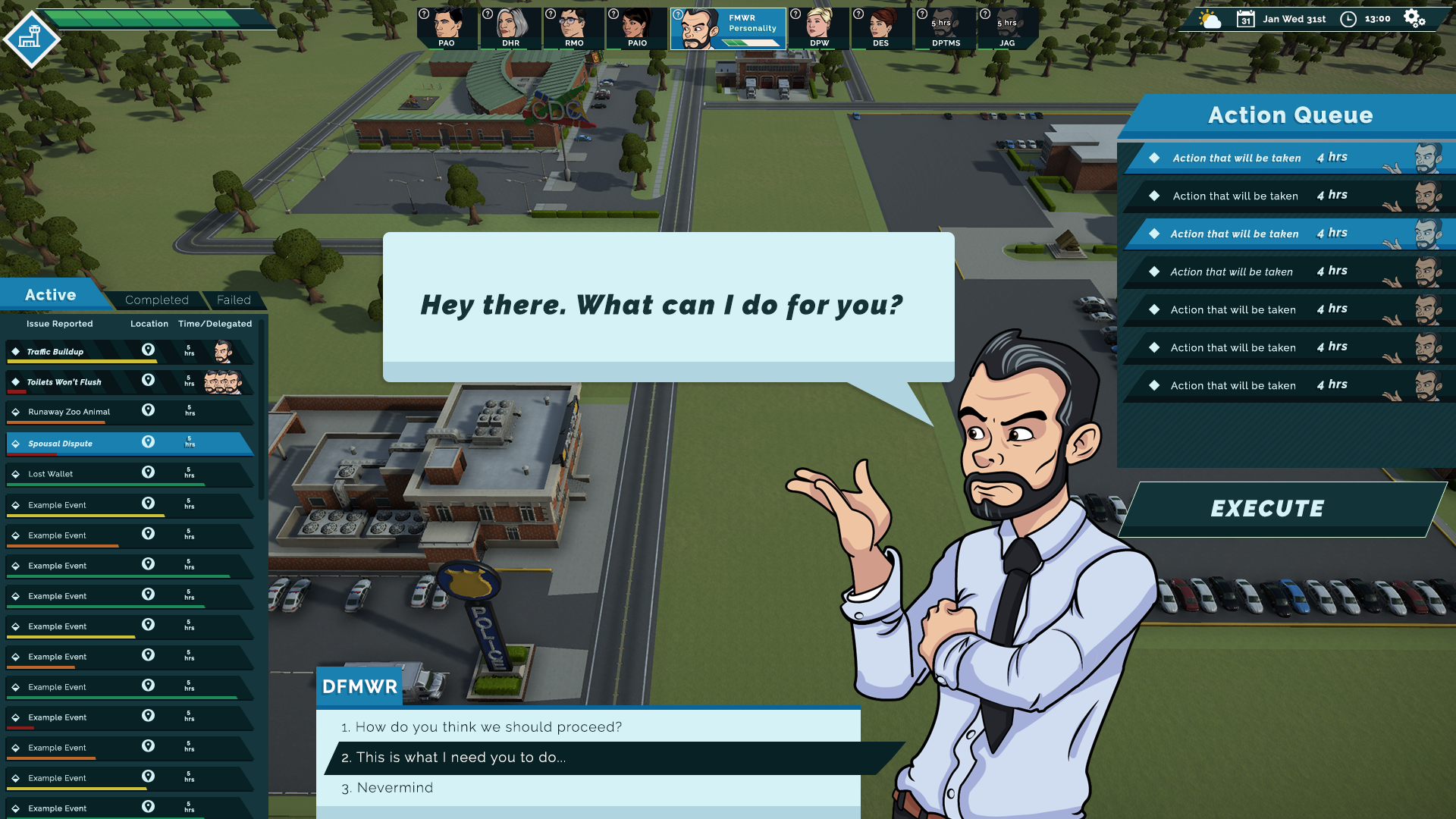
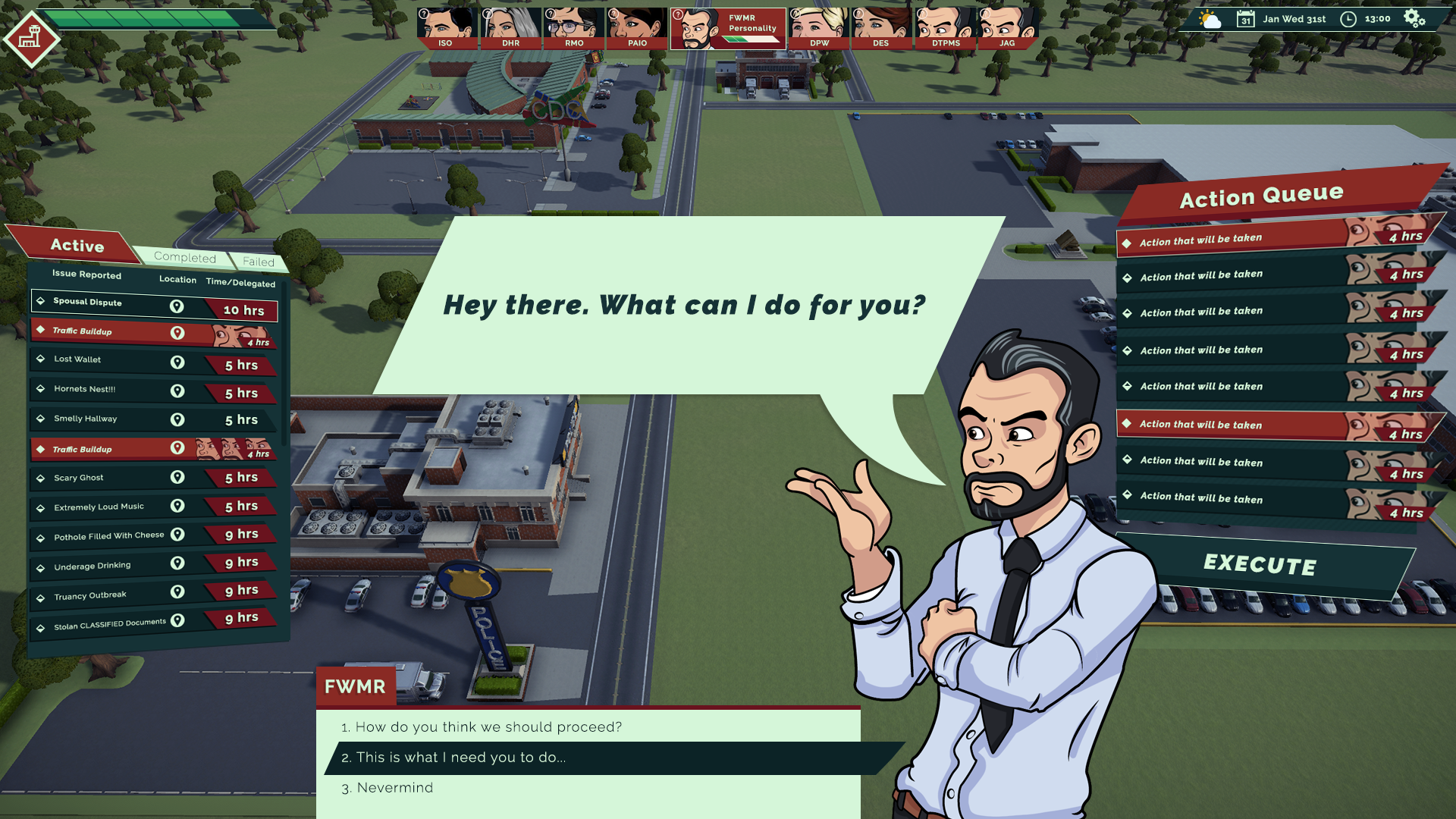
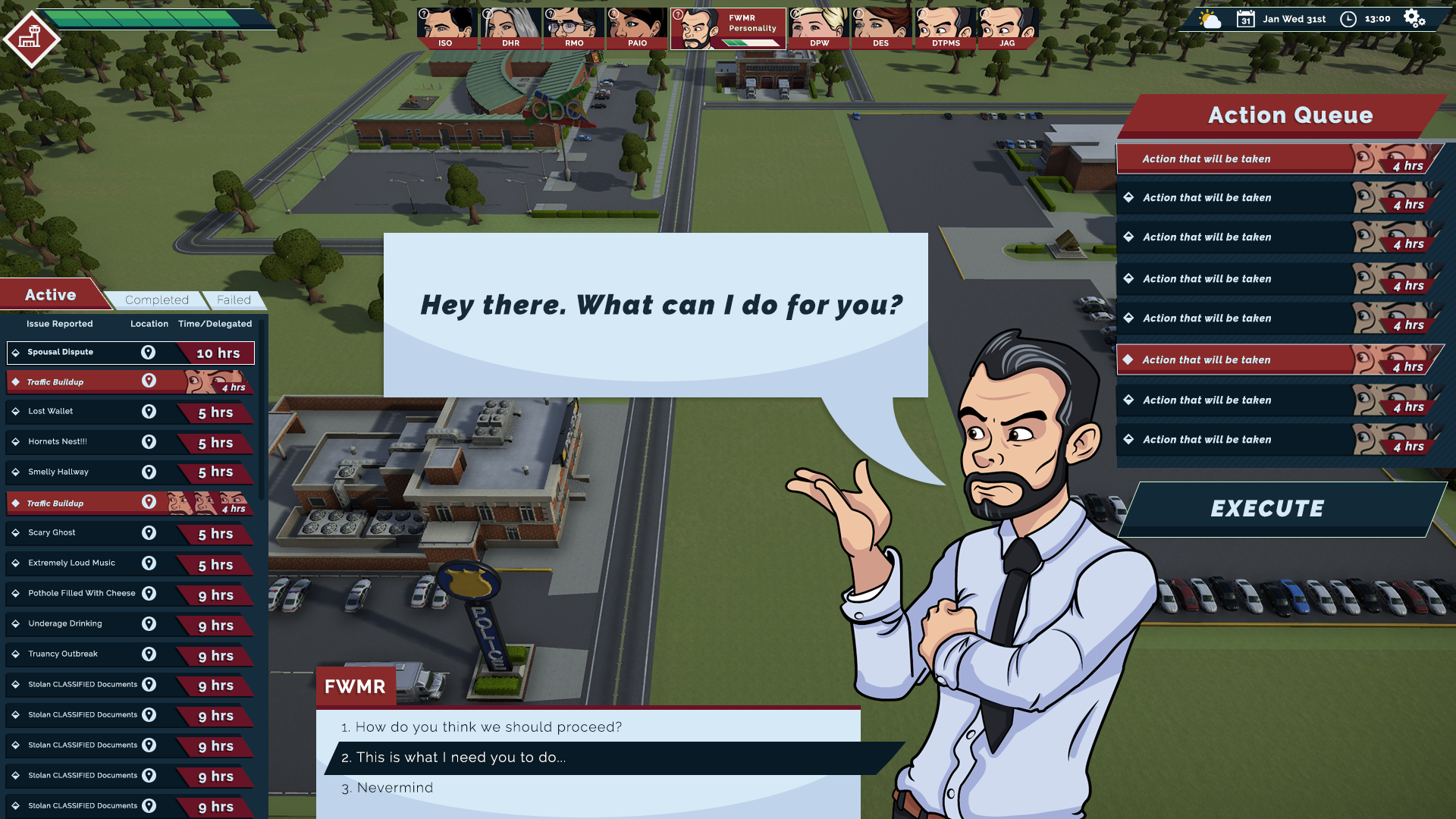
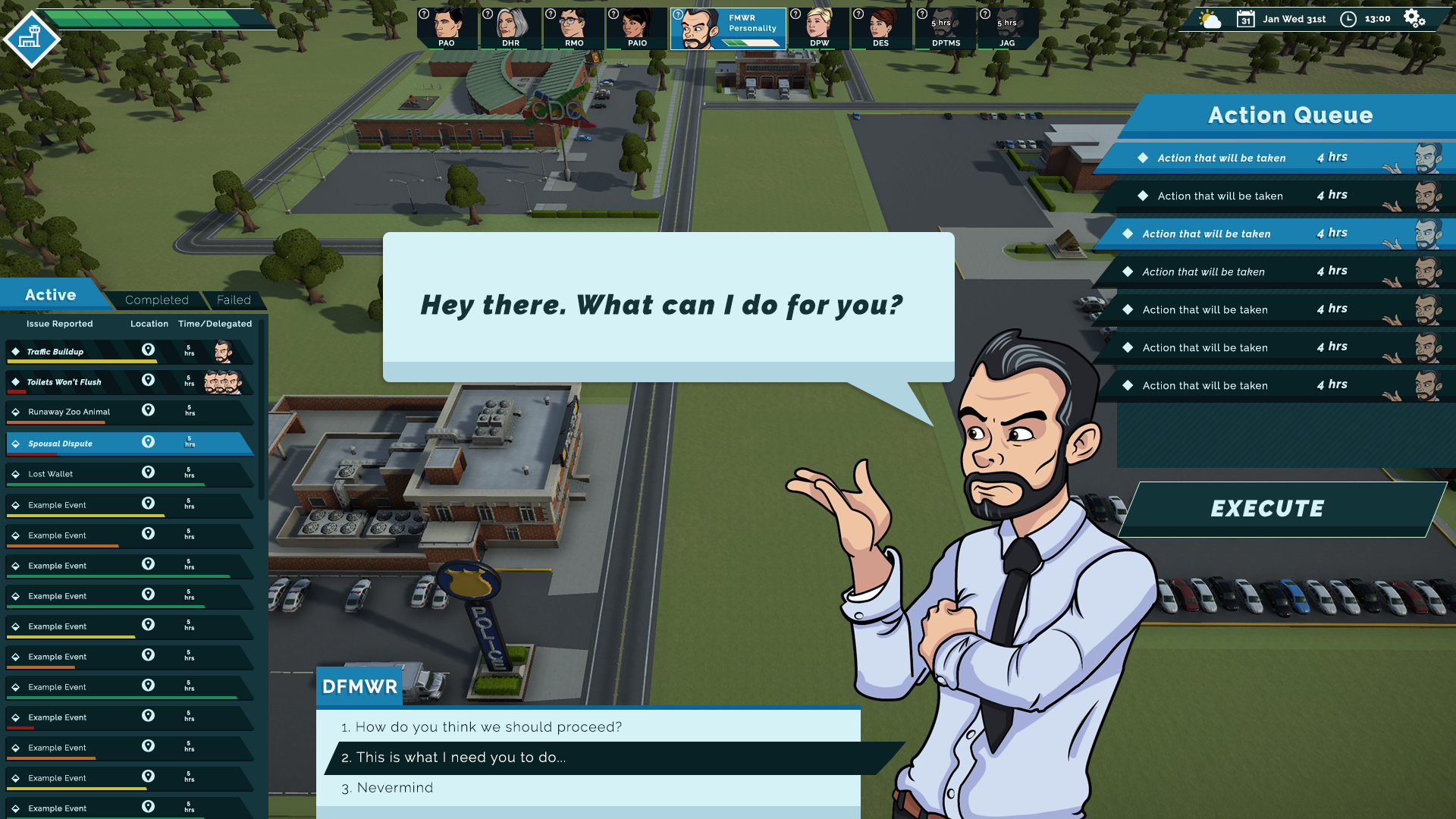
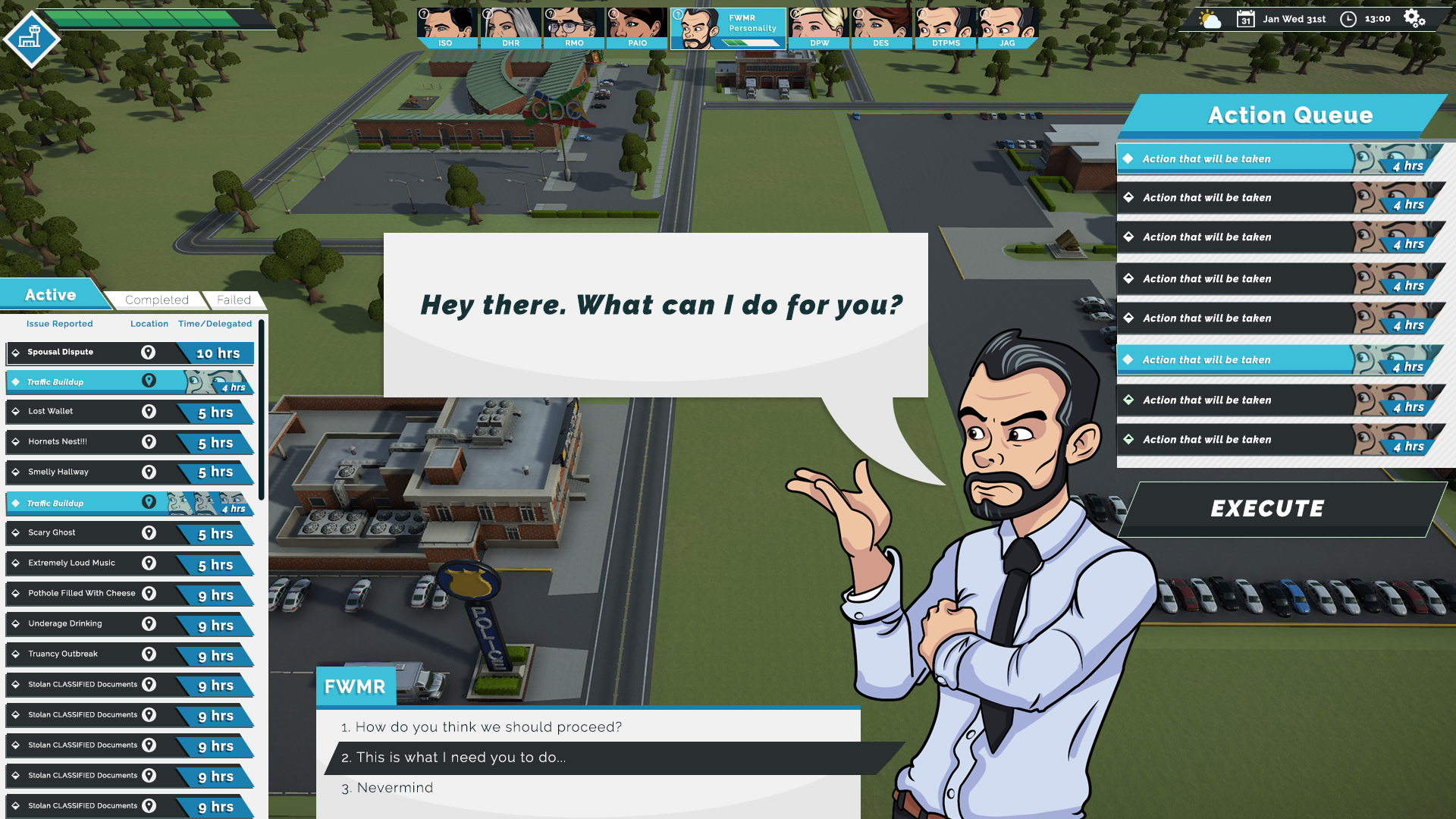
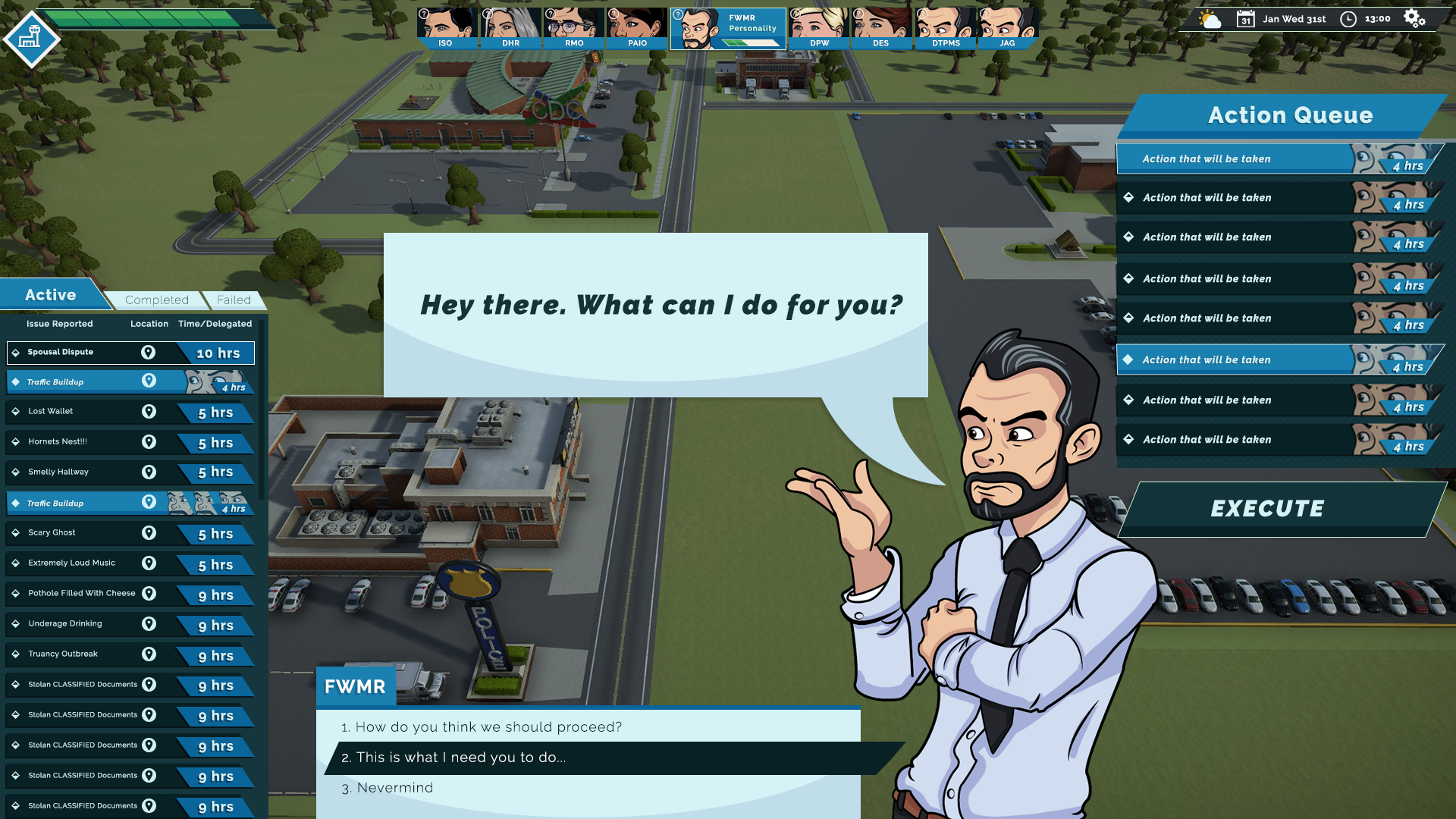
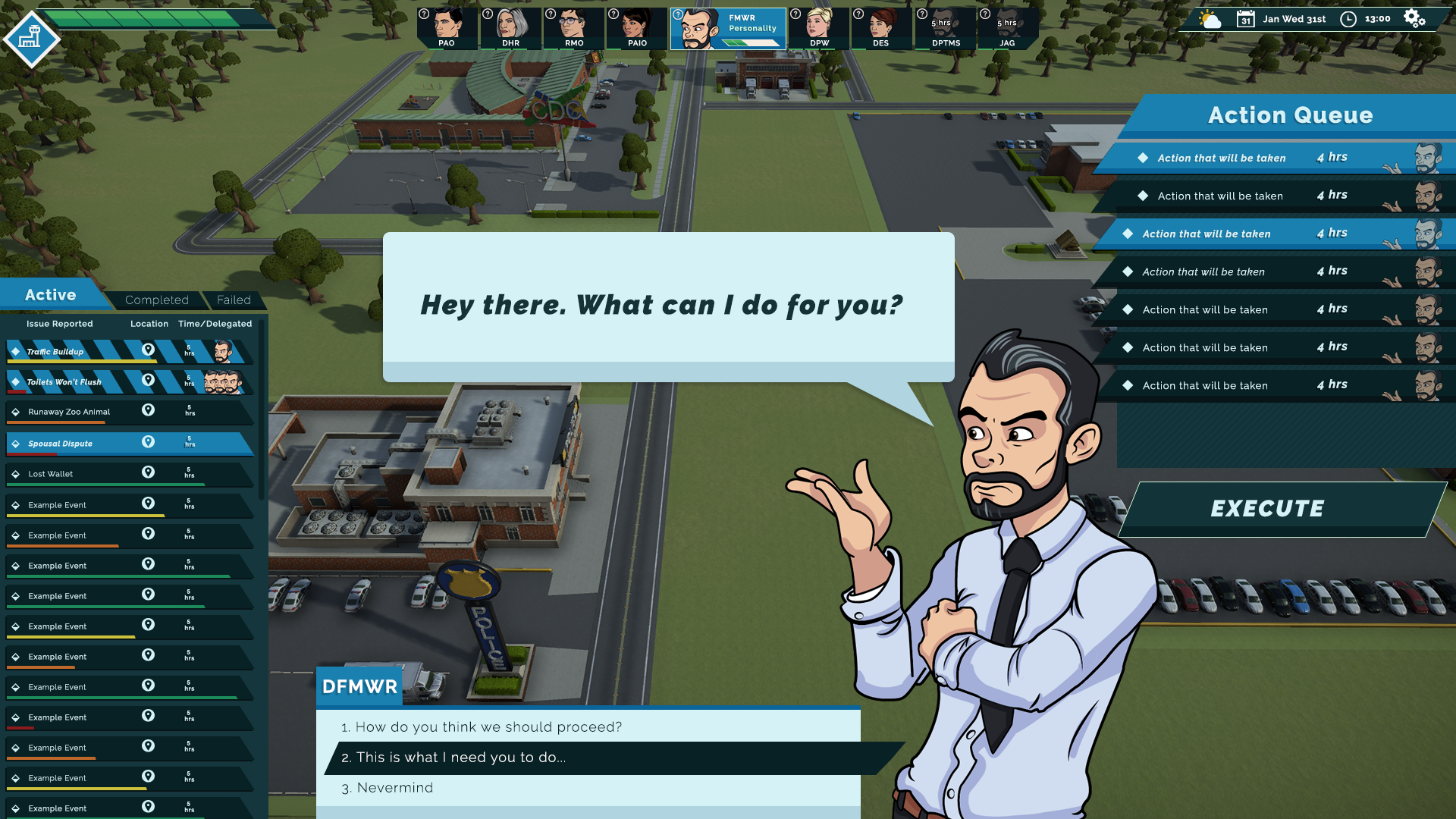
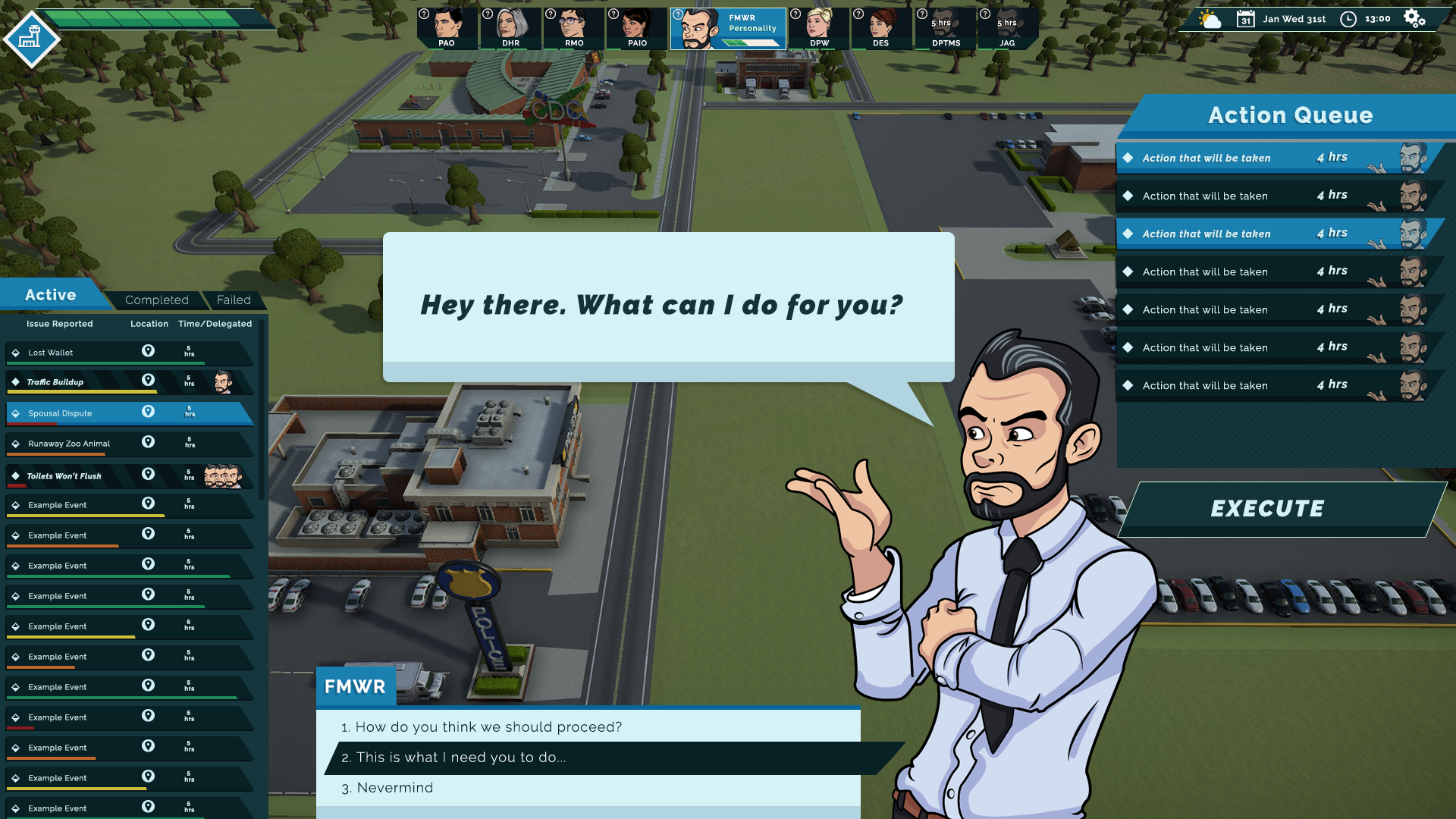
building the character of the game
Knowing the strength of my design team and working with our small budget, I proposed we go with illustrated characters. The customer loved this decision, and users loved the expressive characters. We referenced animations our demographic were familiar with and tried to achieve an "Archer-esque" look.
I worked with the design team to help refine the characters and art style. I was fortunate to work with extremely talented artists and animators, who ran with the concept and developed some fantastic character designs.




systemic design
Building each core game element was an exploratory process. Working off the customers original mockups, we had functionality within the game but we had to develop a way for users to easily navigate it. As we added navigation, we wanted to keep the flow focused on the core experience.
We developed multiple systems to manage events within the game. We introduced an action system, events system, calendar system, scoring system, notifications system, dialog system, interaction system, and email system. We tested interactions using notecards and whiteboards before building each system into the game.
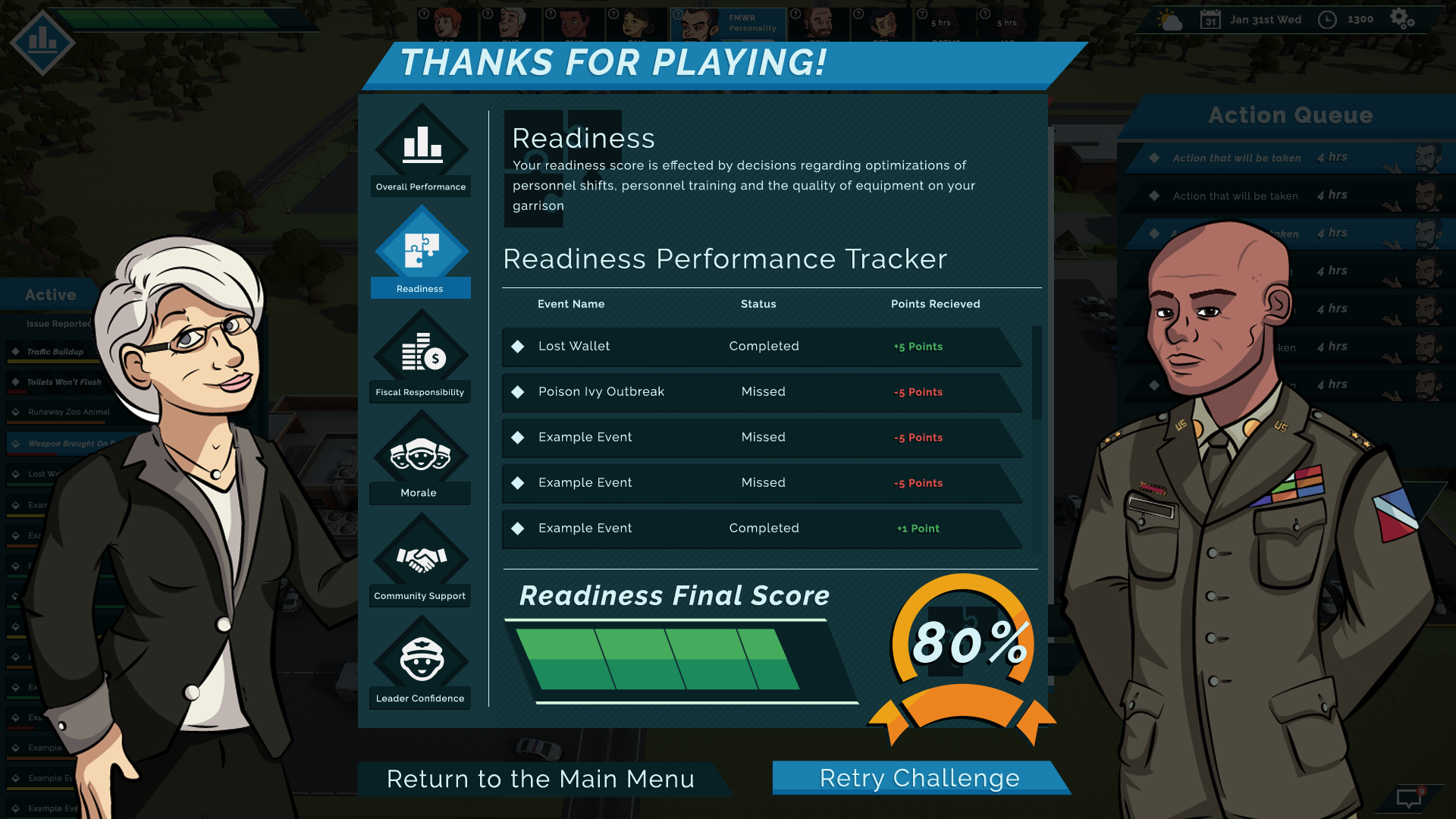
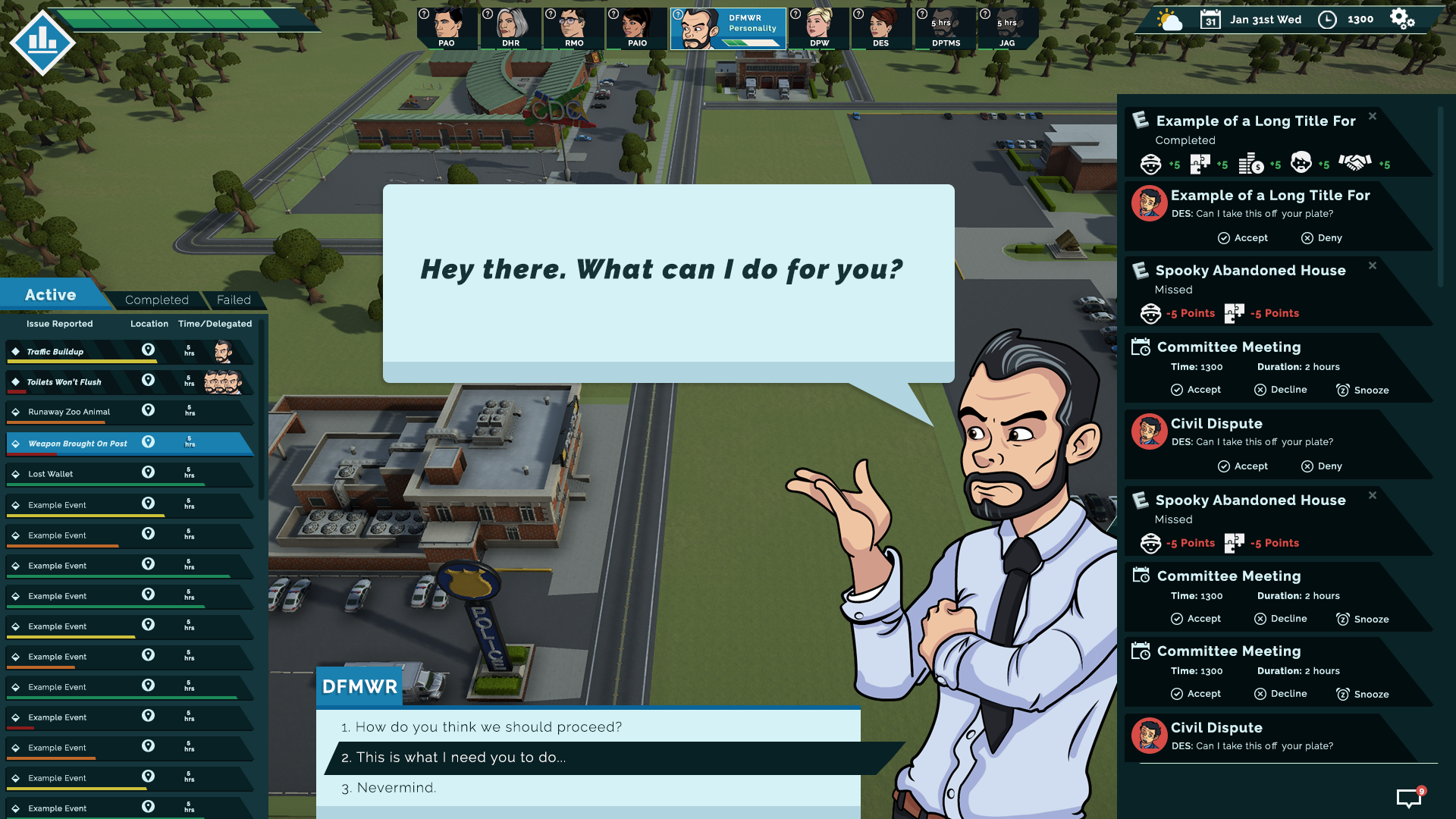
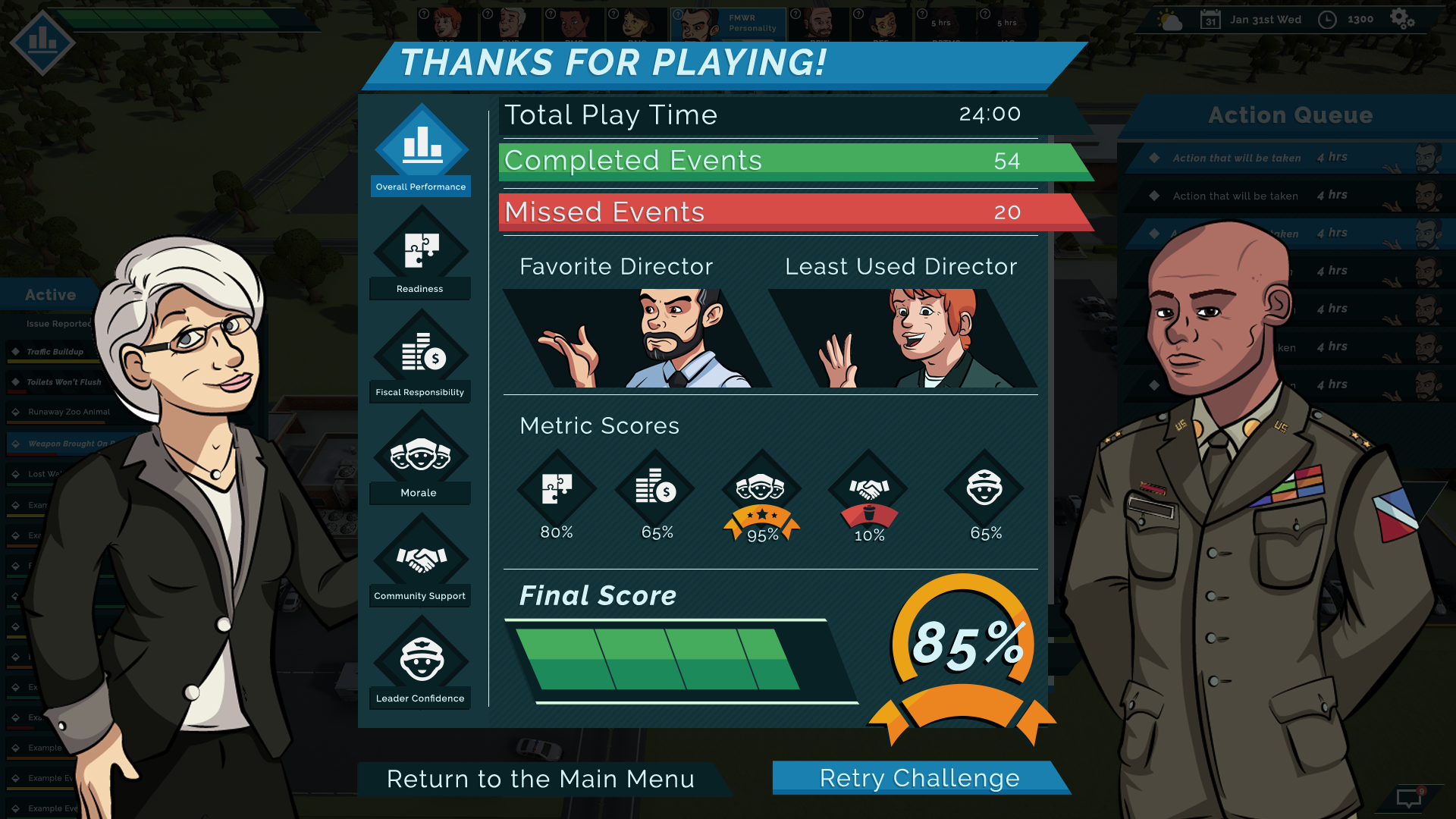
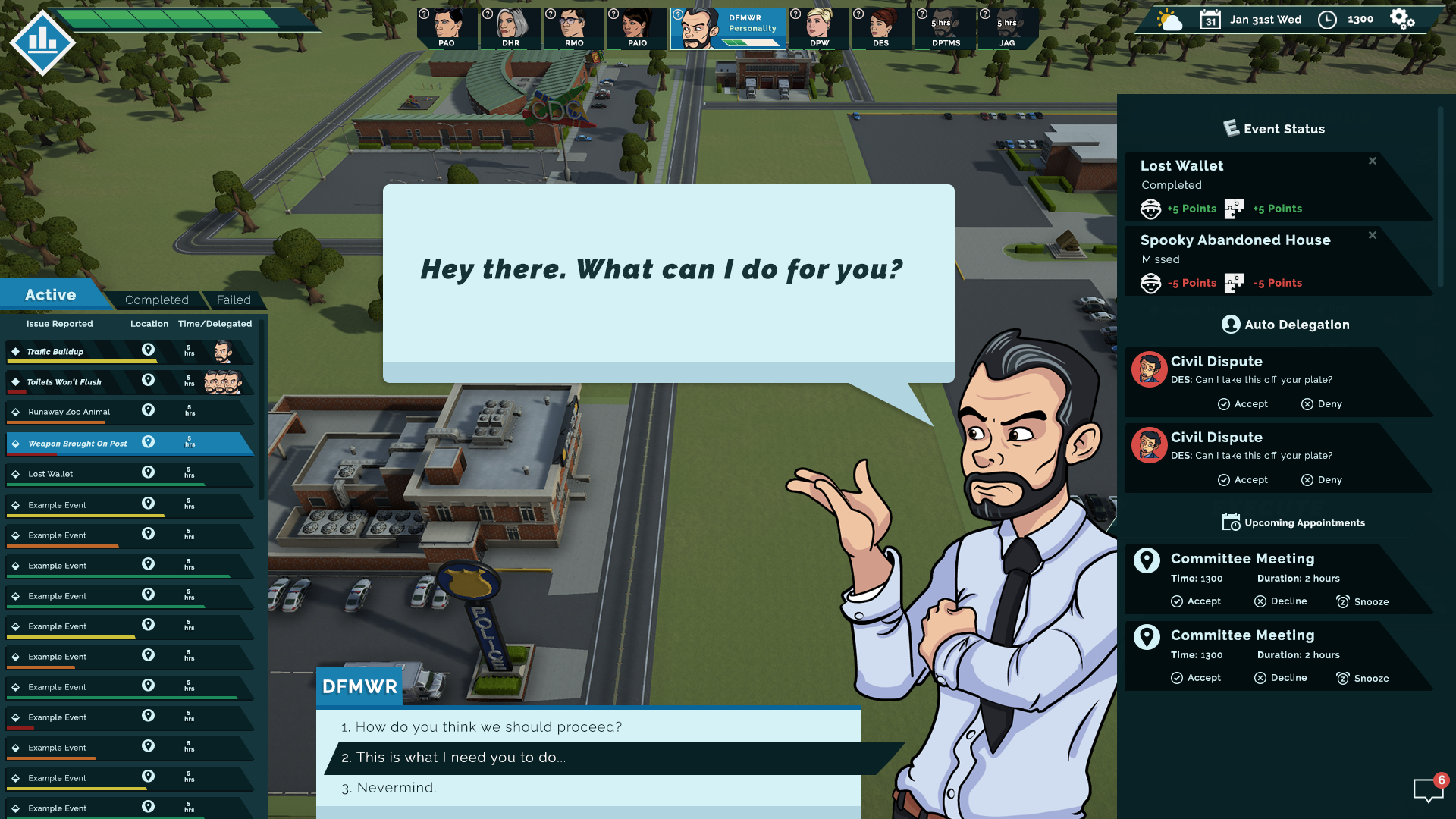
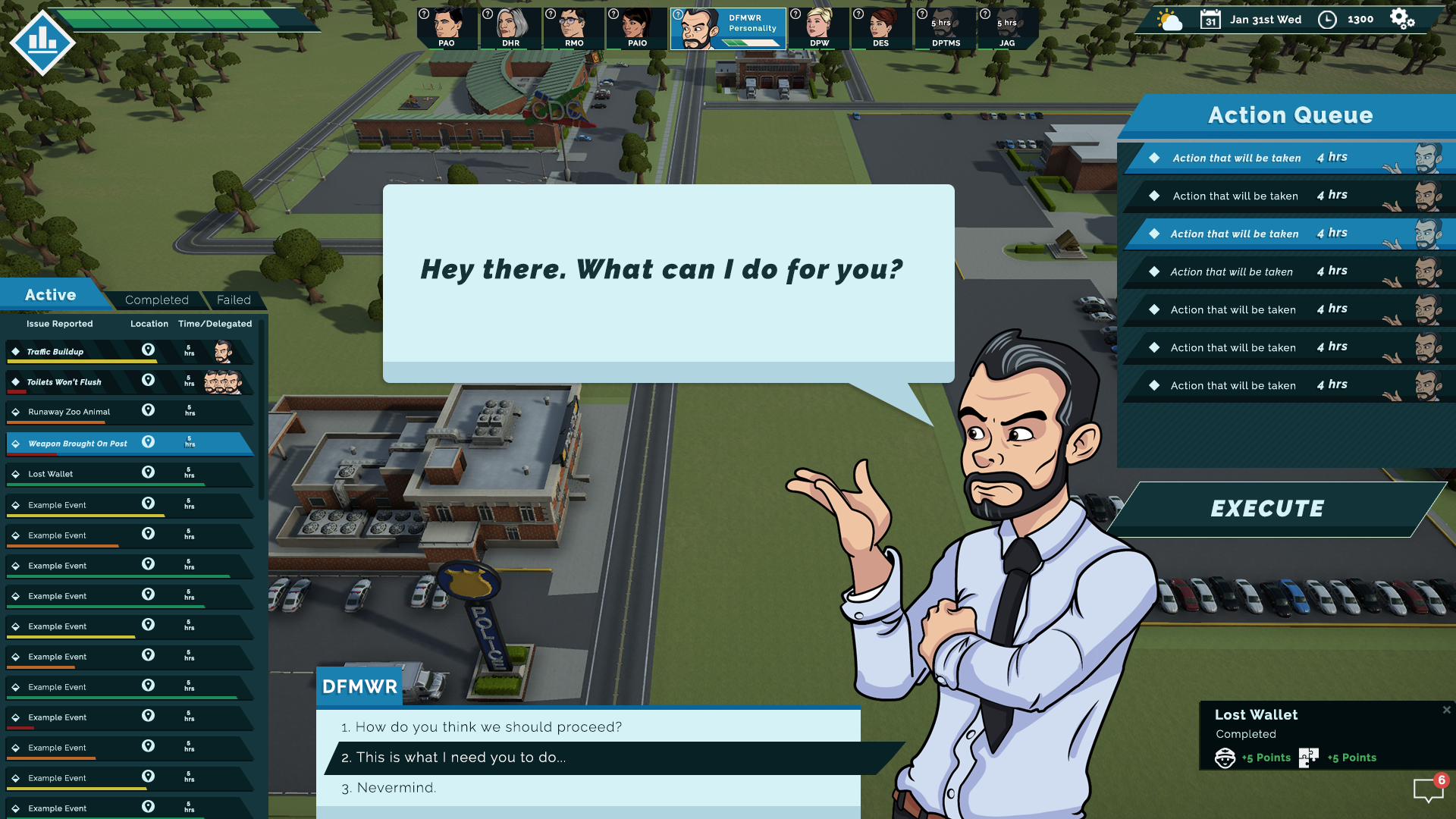
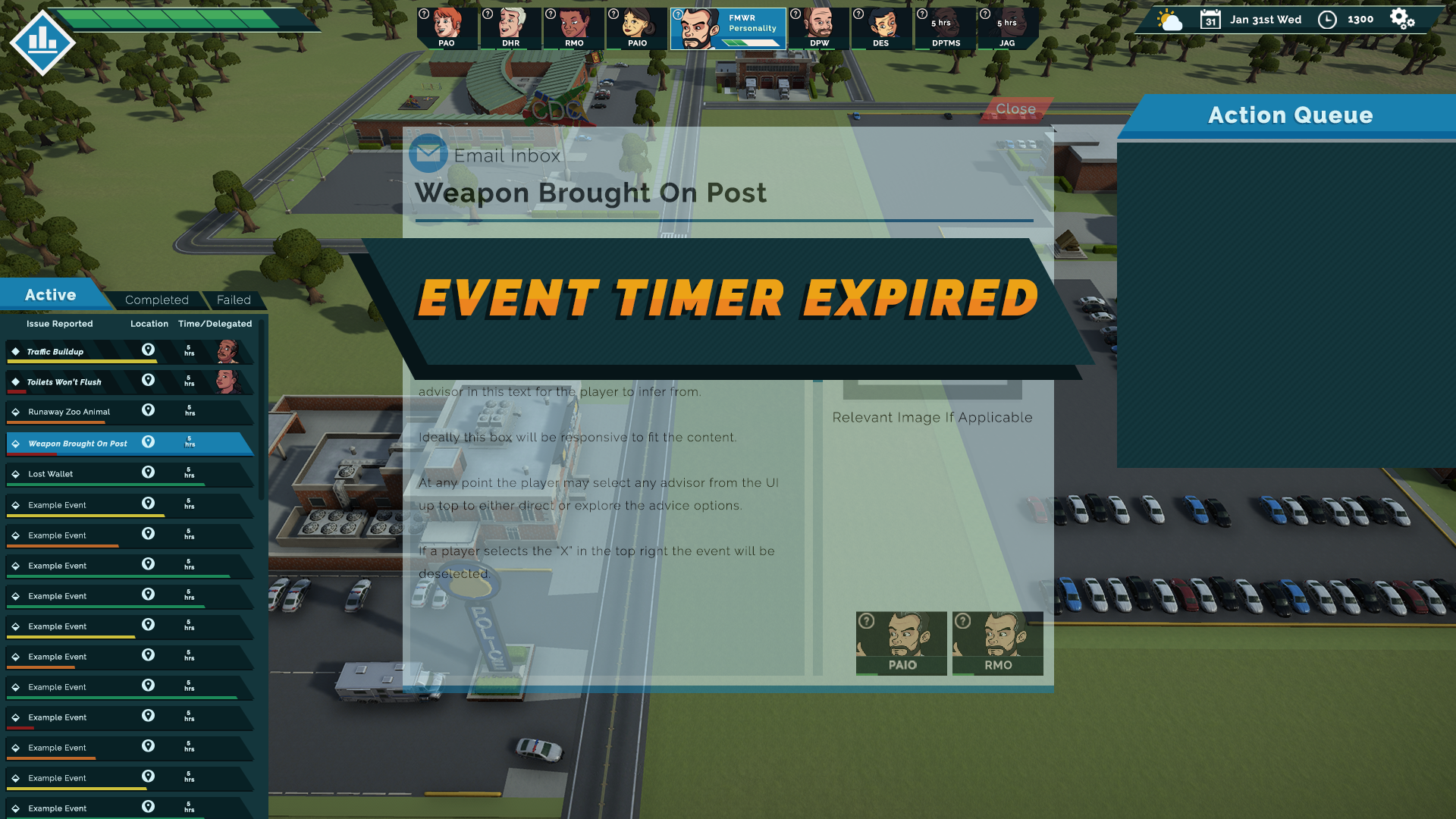
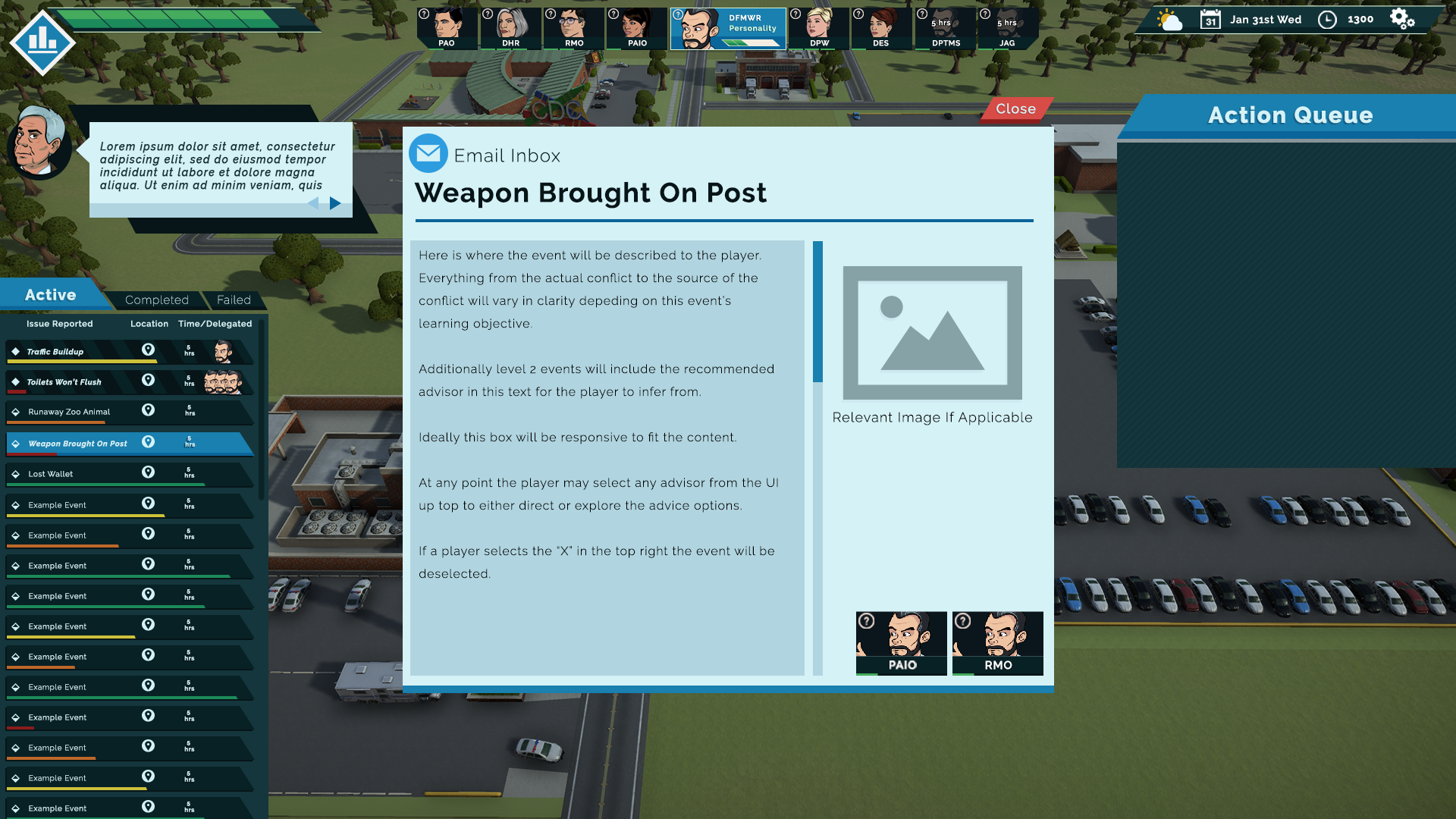
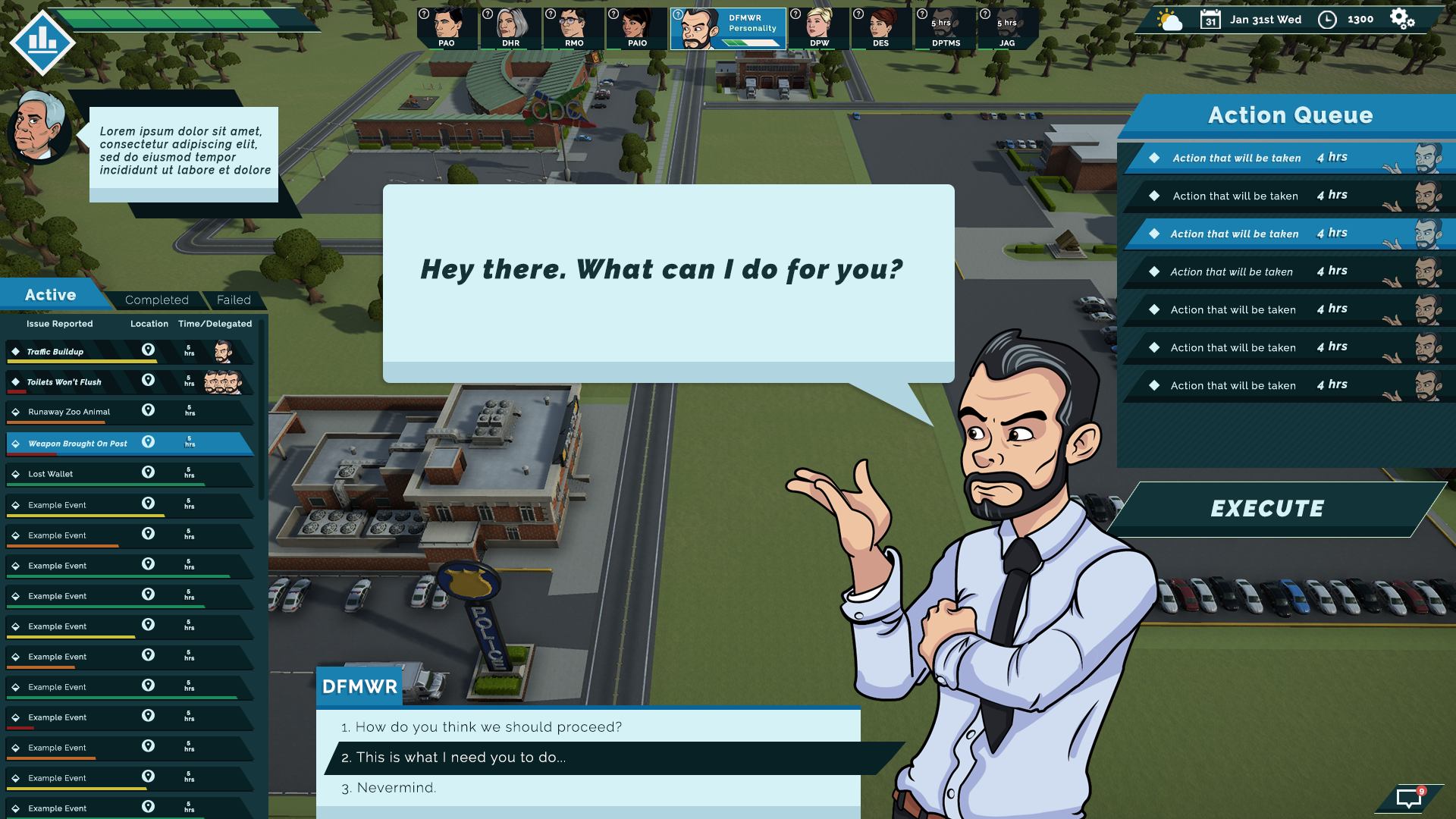
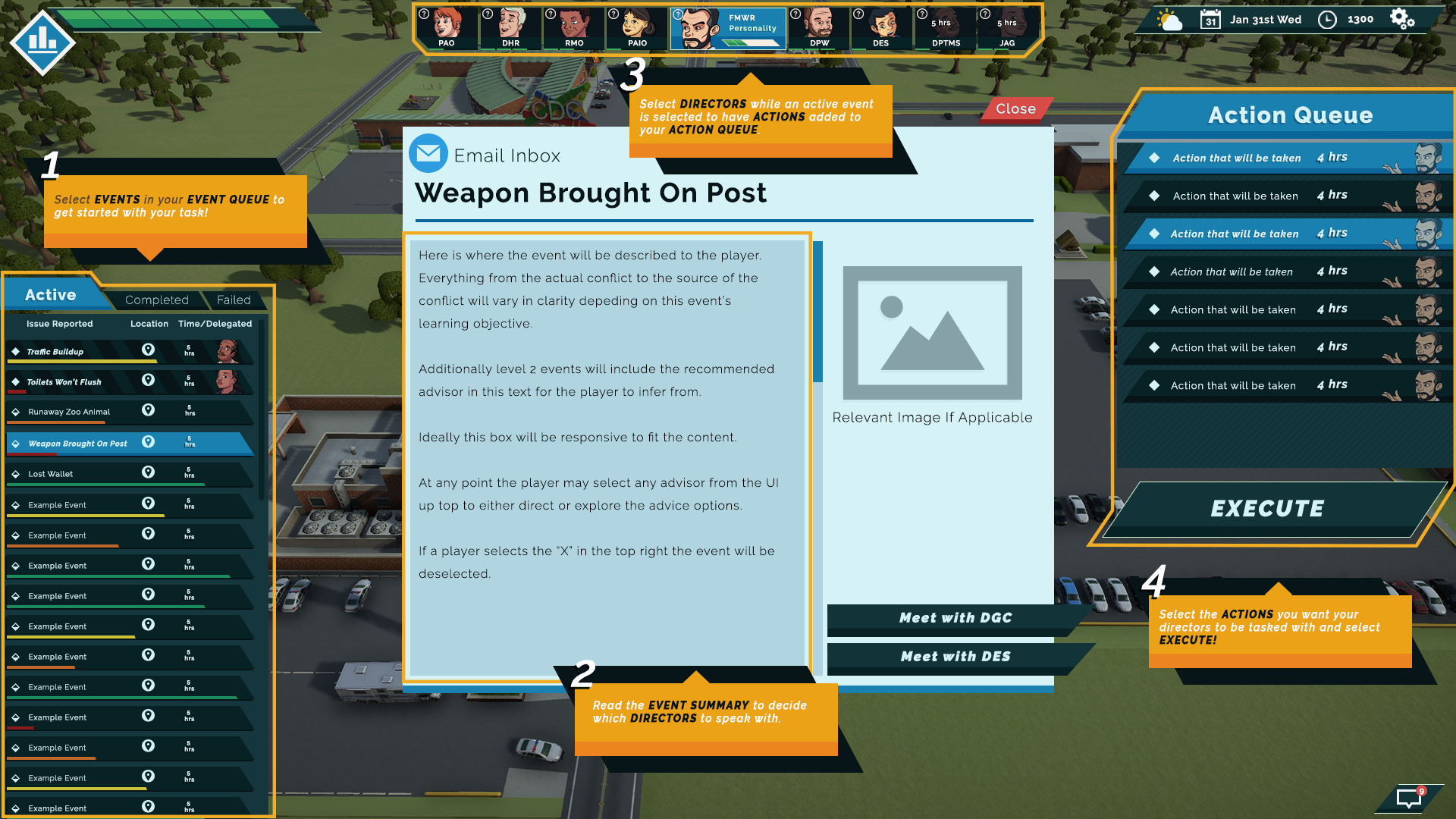
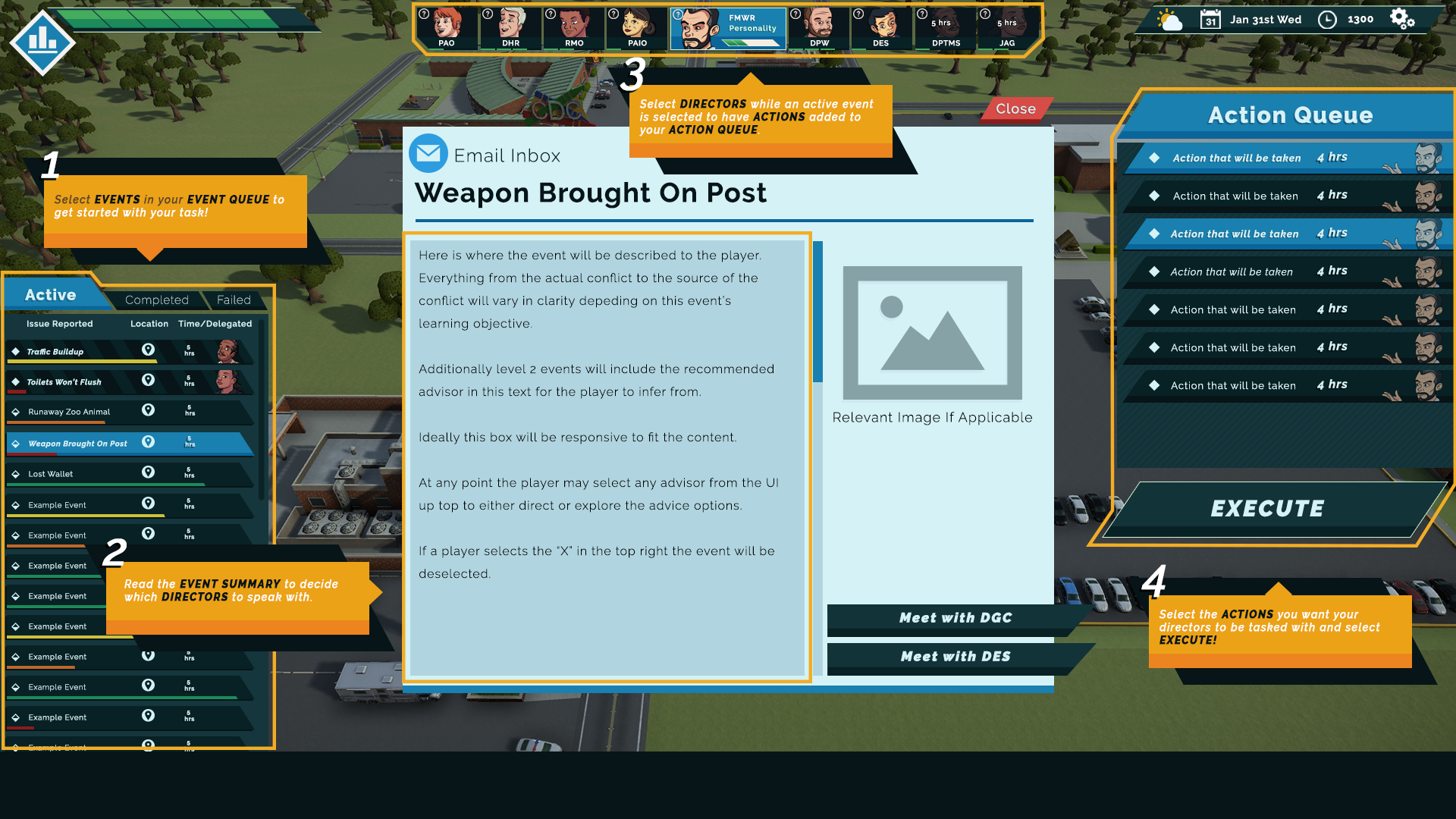
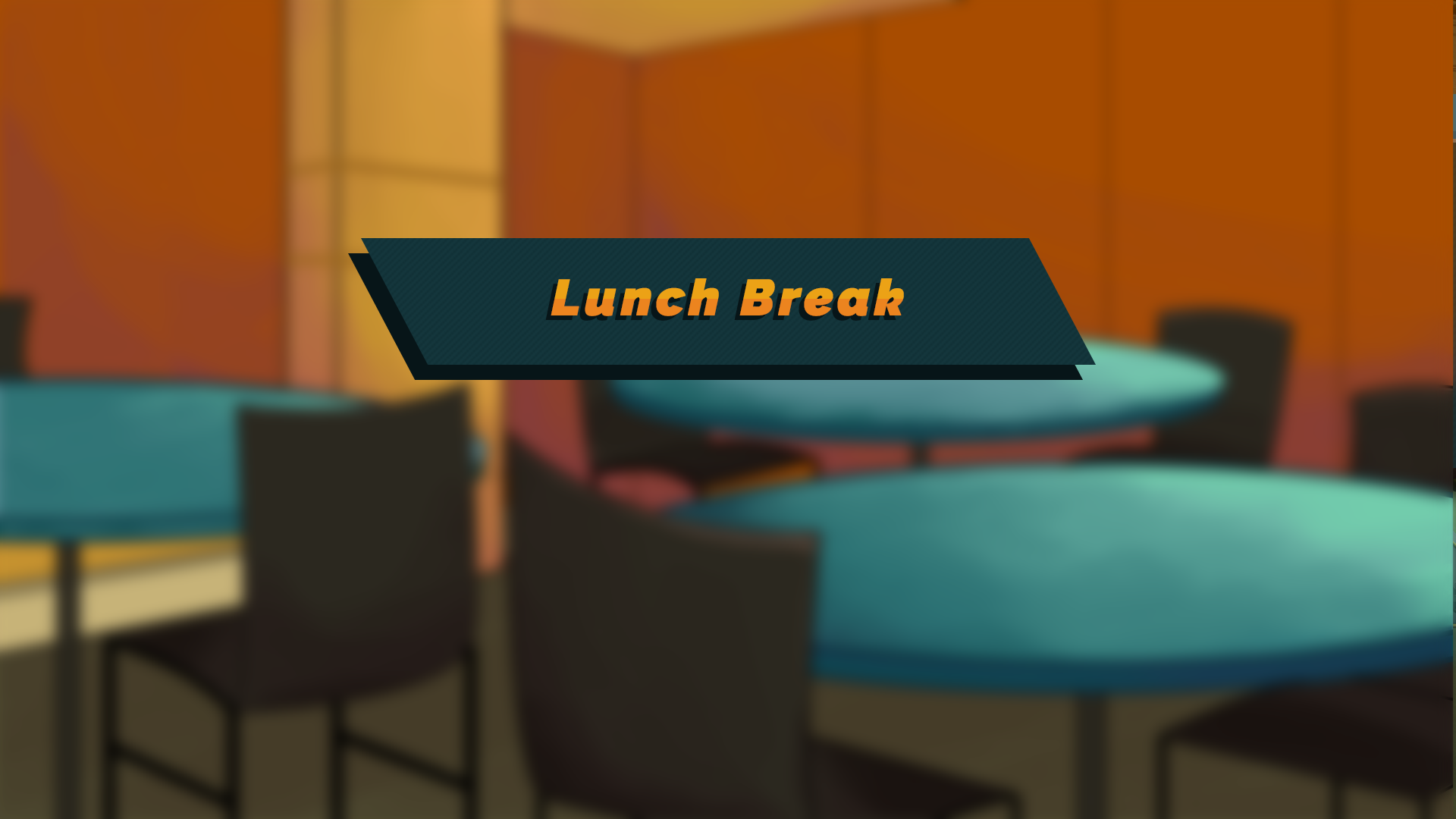
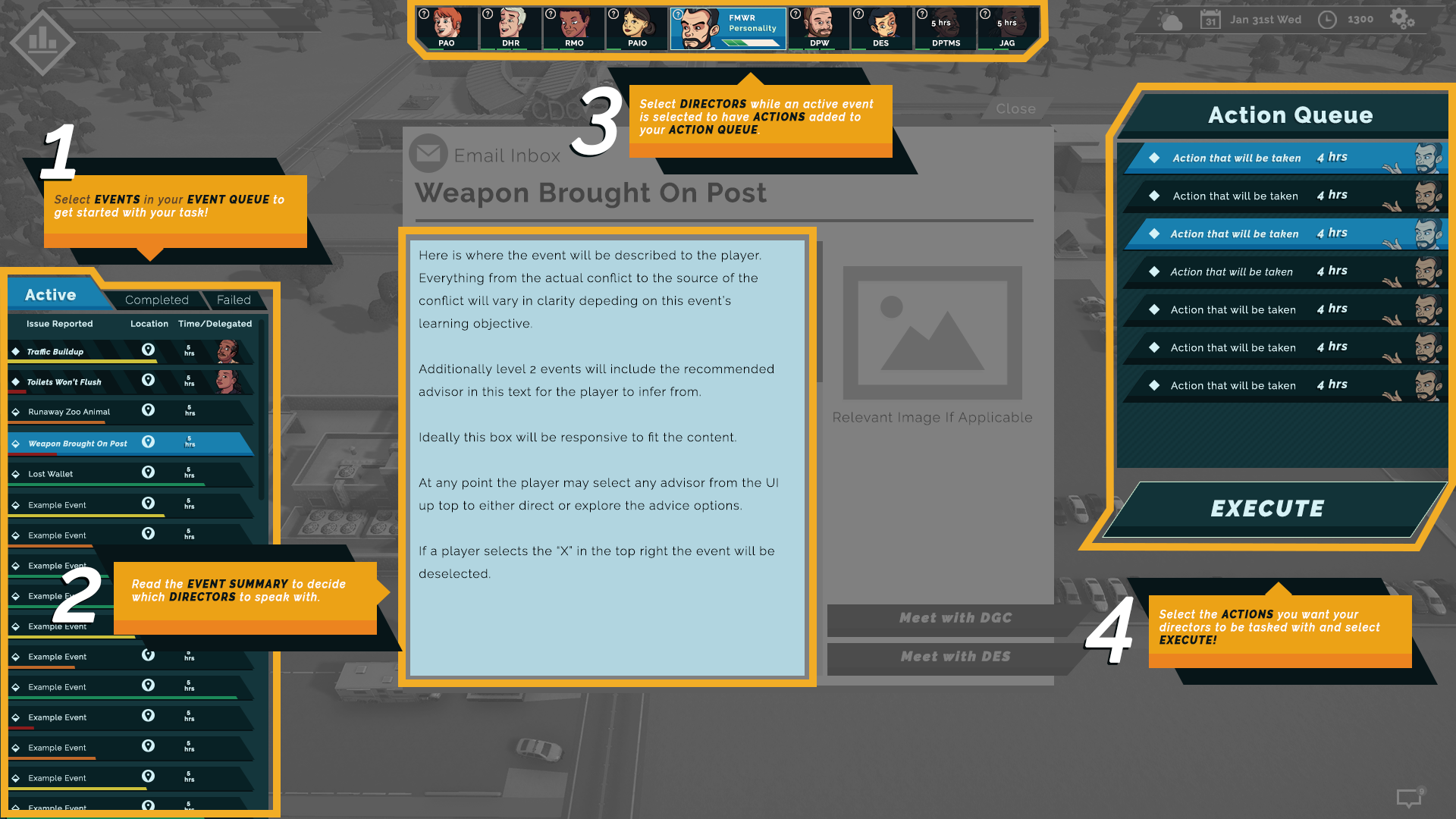
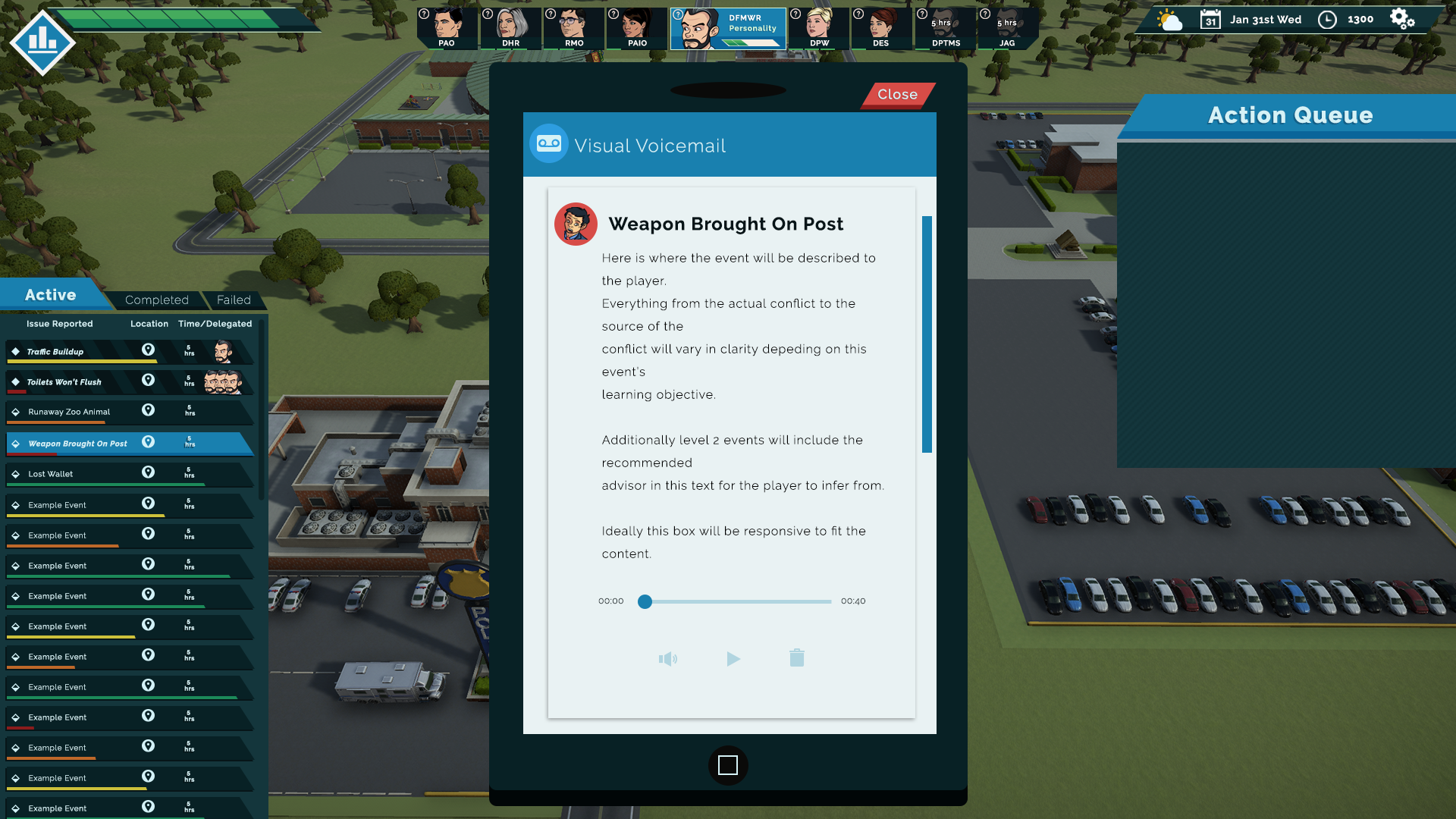
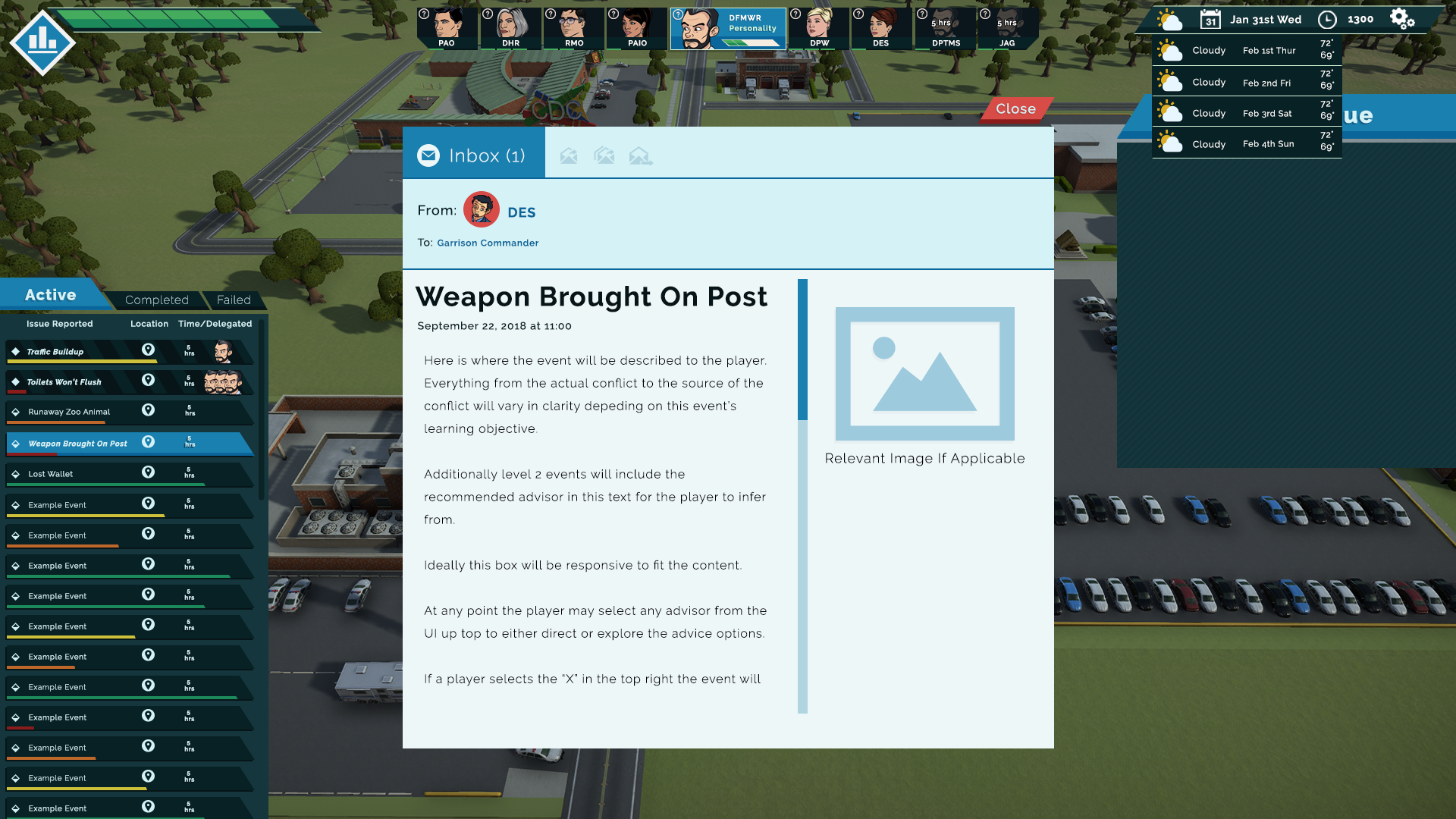
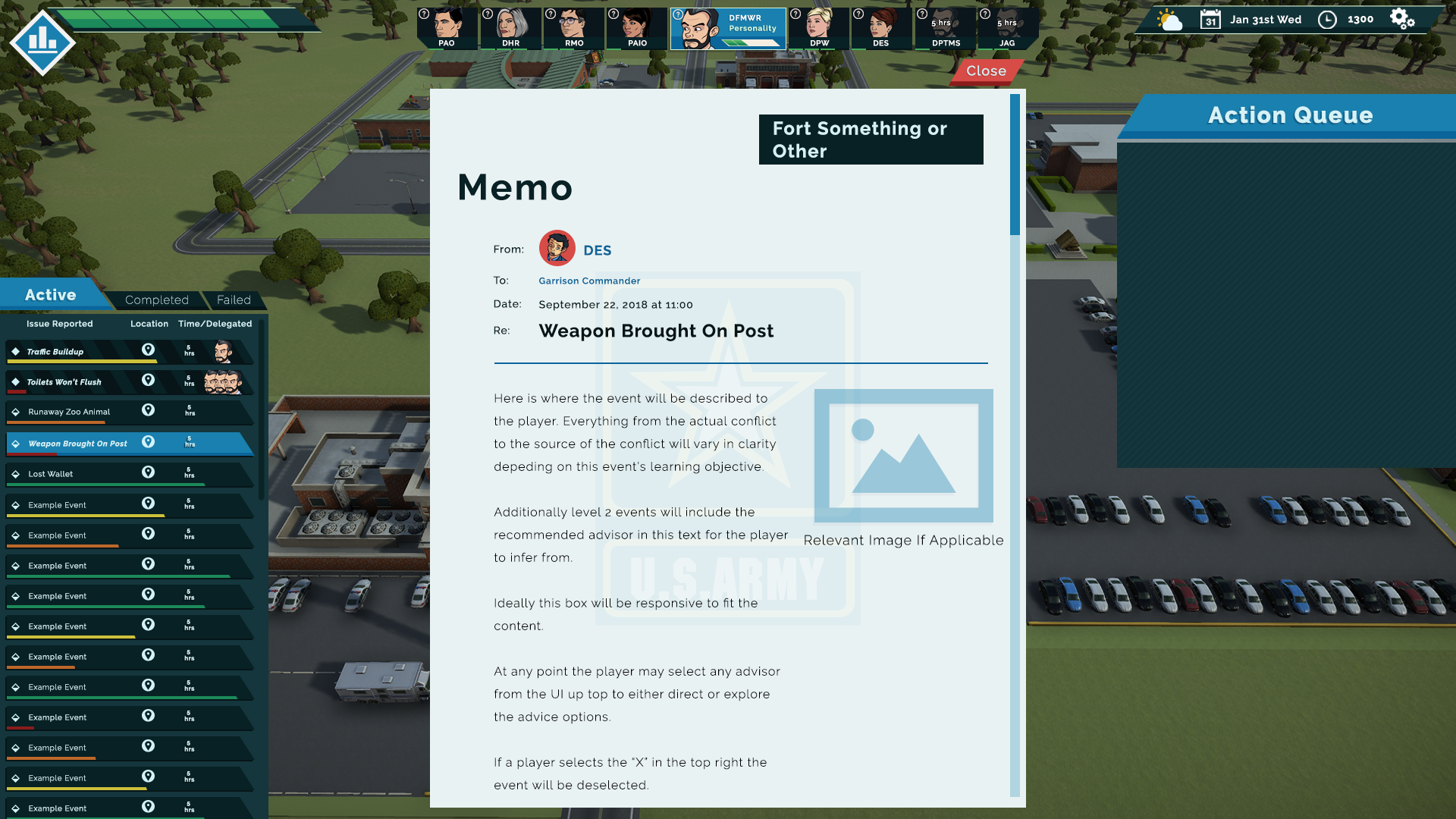
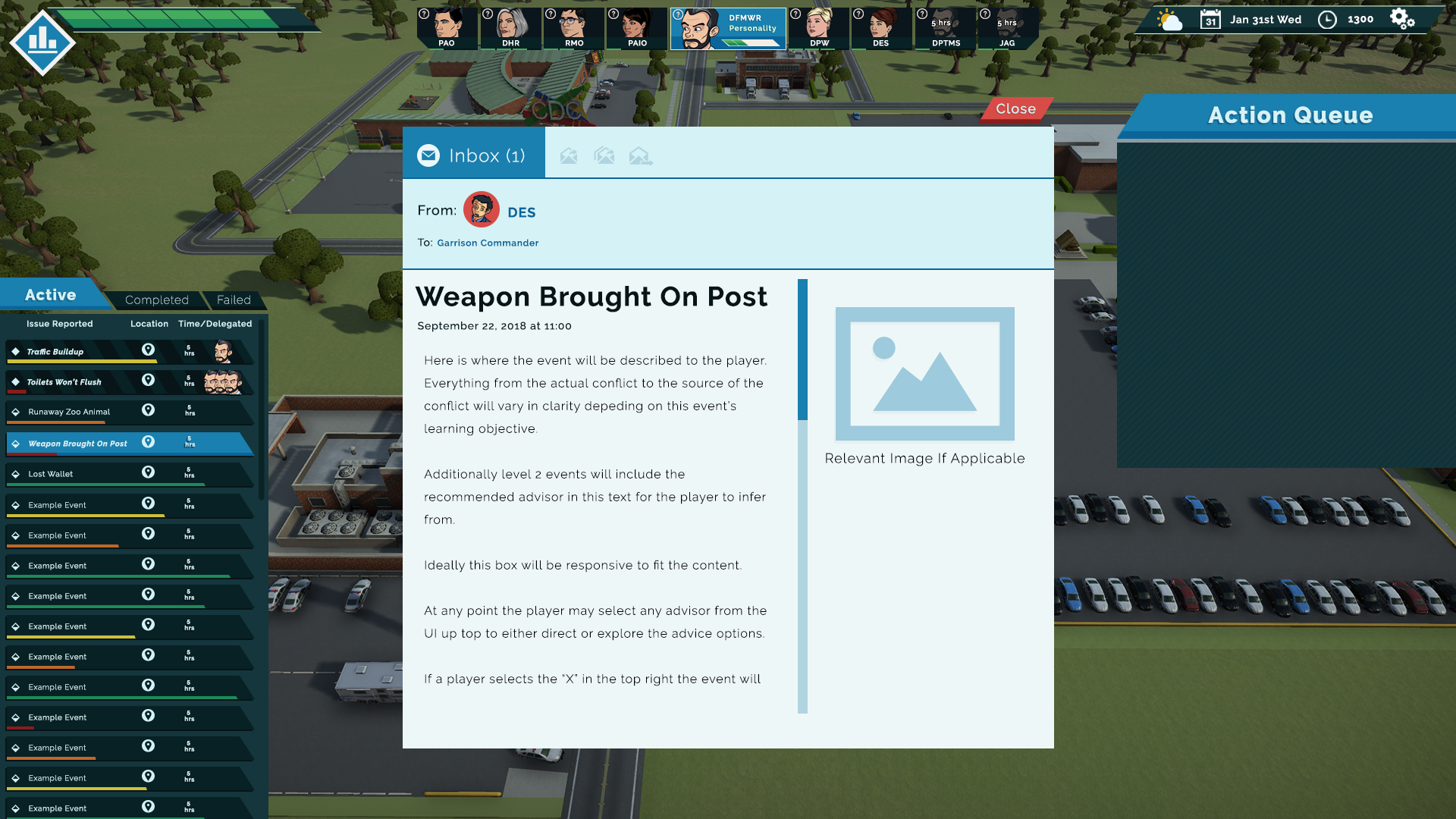
USER TESTING & Delivery
We performed user testing throughout the development of the game and had a signficantly large user test a few months before final delivery. We monitored users interationcs with the game and were able to get feedback on all the core gameplay and features. We modified the game according to user feedback, delivered the Phase 1 final product, and waited while the Department of Defense fielded the game to begin Phase 2.
Unfortunately, Phase 2 never recieved funding due to changes in the militaries fiscal training budget made by the President.